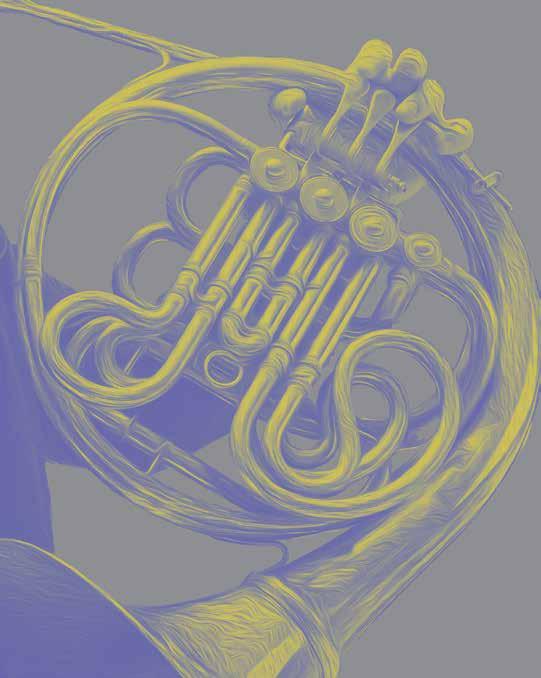
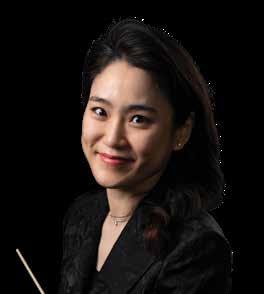
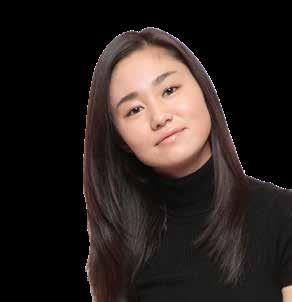
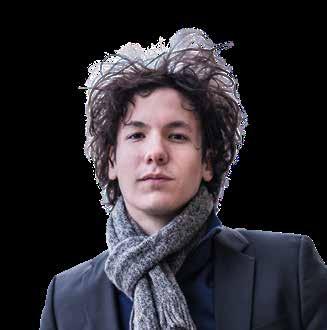
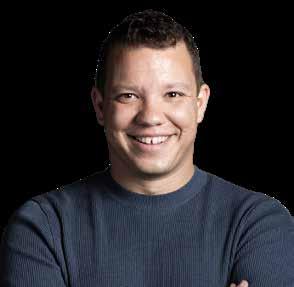
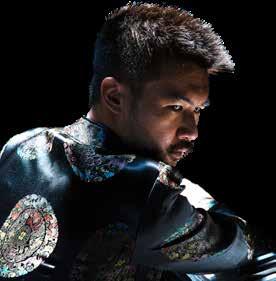
FEBRUARY 2023
ATLANTA SYMPHONY ORCHESTRA

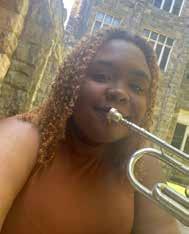
aso.org | @AtlantaSymphony | facebook.com/AtlantaSymphony FEBRUARY 2023 INTRODUCTIONS In Tune 4 Music Director 7 ASO Leadership ................... 8 ASO Musicians ................... 10 NOTES ON THE PROGRAM Written by Noel Morris FEBRUARY 2, 3 20 FEBRUARY 9, 11 .................. 28 FEBRUARY 23, 24 ................ 36 DEPARTMENTS ASO Support ..................... 44 Henry Sopkin Circle 48 ASO Staff 49 Woodruff Circle 51 Benefactor Circle ................. 52 Page 14 ASO Talent Development program celebrates 30 years. encoreatlanta.com | 1

ENCOREATLANTA.COM PUBLISHER Brantley Manderson brantley@encoreatlanta.com SENIOR ACCOUNT DIRECTOR Donna Choate donna@encoreatlanta.com EDITOR IN CHIEF Robert Viagas robert@encoreatlanta.com GRAPHIC DESIGNER Tamara Hooks tamara@encoreatlanta.com DIGITAL MEDIA DIRECTOR Jennifer Nelson jennifer@encoreatlanta.com ENCORE ATLANTA is published monthly by B2 MEDIA, LLC. P.O. Box 1377 | Columbus, Georgia 31902 Phone 678-837-4004 Copyright © 2023 Encore Atlanta. All rights reserved. Reproduction in whole or in part is strictly prohibited. Encore Atlanta is a registered publication of B2 Media, LLC. The publisher shall not be liable for failure to publish an ad, for typographical errors, or errors in publication. Publisher reserves the right to refuse any advertising for any reason and to alter advertising copy or graphics deemed unacceptable for publication. encore Printed exclusively by Communicorp Our audience is your audience. Advertise with Encore and reach a targeted group of performing arts lovers. As one of the region’s largest Marketing Solutions Providers, Communicorp handles everything from print to digital to emerging technologies like clickable print or eCommerce storefronts. We guide clients through the maze of new marketing technologies and methodologies with a unique approach that always looks beyond yesterday’s solutions. Based in Columbus, GA, Communicorp is a wholly-owned subsidiary of Aflac. To learn more about our award-winning solutions, visit Communicorp.com. CONTACT Donna Choate 678-778-1573 donna@encoreatlanta.com
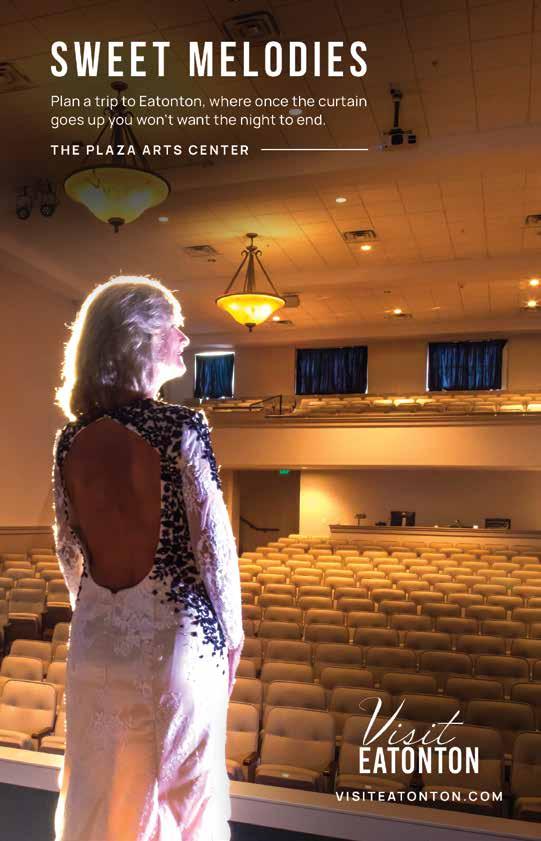
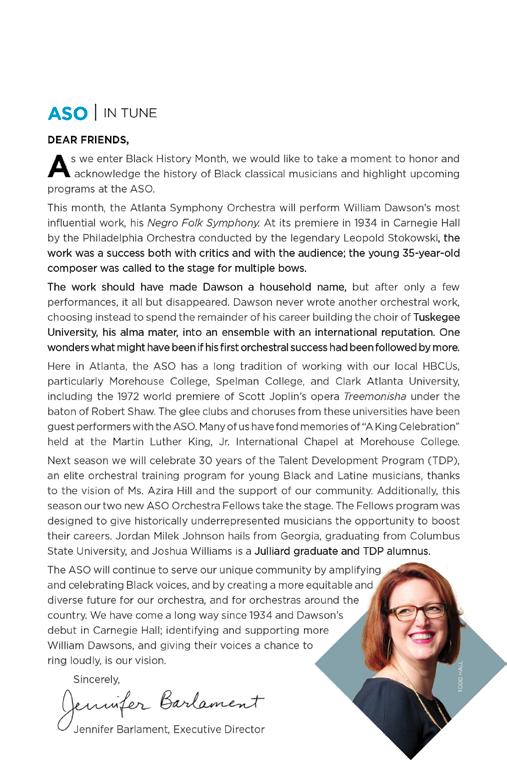
aso.org | @AtlantaSymphony | facebook.com/AtlantaSymphony | encore 4
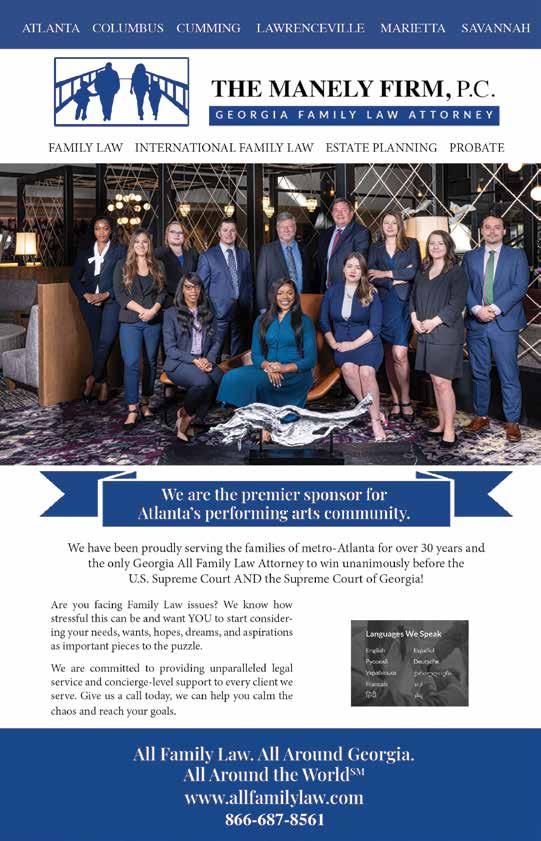

The 2022/23 season marks an exciting new era for the ASO as Maestro Nathalie Stutzmann takes her role as our fifth Music Director, making her the only woman leading a major American orchestra. She has also served as the Principal Guest Conductor of The Philadelphia Orchestra since 2021 and Chief Conductor of the Kristiansand Symphony Orchestra in Norway since 2018.

Nathalie Stutzmann is considered one of the most outstanding musical personalities of our time. Charismatic musicianship combined with unique rigour, energy and fantasy characterize her style. A rich variety of strands form the core of her repertoire: Central European and Russian romanticism is a strong focus—ranging from Beethoven, Schumann, Brahms and Dvořák through to the larger symphonic forces of Tchaikovsky, Wagner, Mahler, Bruckner and Strauss—as well as French 19thcentury repertoire and impressionism.
Highlights as guest conductor in the next seasons include debut performances with the Munich, New York and Helsinki Philharmonics. She will also return to the London Symphony Orchestra and Orchestre de Paris.
Having also established a strong reputation as an opera conductor, Nathalie has led celebrated productions of Wagner’s Tannhäuser in Monte Carlo and Boito’s Mefistofele at the Orange festival. She began the 2022/23 season with a new production of Tchaikovsky’s Pikovaya Dama in The Royal Theater of La Monnaie in Brussels and will make her debut at the Metropolitan Opera this season with two productions of Mozart’s Die Zauberflöte reunite with Wagner’s Tannhäuser for a production at the Bayreuth in 2023.
As one of today’s most esteemed contraltos, she has done more than 80 recordings and received the most prestigious awards. Her newest album released in January 2021, Contralto, was awarded the Scherzo’s “Exceptional” seal, Opera Magazine’s Diamant d’Or and radio RTL’s Classique d’Or. She is an exclusive recording artist of Warner Classics/Erato.
Nathalie was named “Chevalier de la Légion d’Honneur,” France’s highest honor, and “Commandeur dans l’Ordre des Arts et des Lettres” by the French government.
ASO | NATHALIE STUTZMANN
encoreatlanta.com | 7
SIMON FOWLER
ASO | LEADERSHIP | 2022/23 Board of Directors
OFFICERS
Patrick Viguerie chair
Janine Brown immediate past chair
Bert Mills treasurer Angela Evans secretary
DIRECTORS
Phyllis Abramson
Keith Adams
Juliet M. Allan
Susan Antinori
Andrew Bailey
Jennifer Barlament*
Paul Blackney Rita Bloom Zachary Boeding* Janine Brown
Benjamin Q. Brunt
Betsy Camp
S. Wright Caughman, M.D. Lisa Chang
Susan Clare Russell Currey Sheila Lee Davies
Erroll Brown Davis, Jr.
Carlos del Rio, M.D. FIDSA
Lisa DiFrancesco, M.D.
Sloane Drake
Lynn Eden Angela Evans Craig Frankel Sally Bogle Gable Anne Game
Rod Garcia-Escudero Sally Frost George Robert Glustrom Bonnie B. Harris Charles Harrison
Tad Hutcheson, Jr. Roya Irvani Joia Johnson
Susan Antinori vice chair Lynn Eden vice chair
Chris Kopecky
Randolph J. Koporc Carrie Kurlander James H. Landon Donna Lee Sukai Liu Kevin Lyman Deborah Marlowe Shelley McGehee
Arthur Mills IV Bert Mills Molly Minnear Hala Moddelmog* Terence L. Neal Galen Lee Oelkers Dr. John Paddock Howard D. Palefsky Cathleen Quigley
BOARD OF COUNSELORS
Neil Berman
John W. Cooledge, M.D.
John R. Donnell, Jr. Jere A. Drummond
Carla Fackler
Charles B. Ginden John T. Glover
Dona Humphreys
Aaron J. Johnson, Jr.
Ben F. Johnson, III
James F. Kelley
Patricia Leake Karole F. Lloyd
LIFE DIRECTORS
Howell E. Adams, Jr. Connie Calhoun
*Ex-Officio Board Member
Meghan H. Magruder
Penelope McPhee
Patricia H. Reid
Joyce Schwob
John A Sibley, III H. Hamilton Smith
James Rubright vice chair
Doug Reid
James Rubright
William Schultz Charles Sharbaugh
Fahim Siddiqui W. Ross Singletary, II John Sparrow Elliott Tapp
Brett Tarver S. Patrick Viguerie Kathy Waller
Mark D. Wasserman Chris Webber
John B. White, Jr. Richard S. White, Jr. Kevin E. Woods, M.D., M.P.H.
C. Merrell Calhoun
G. Kimbrough Taylor, Jr. Michael W. Trapp
Ray Uttenhove
Chilton Varner
Adair M. White Sue Sigmon Williams
Azira G. Hill
aso.org | @AtlantaSymphony | facebook.com/AtlantaSymphony
| encore 8
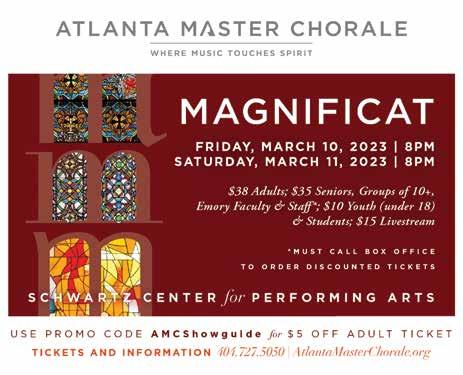
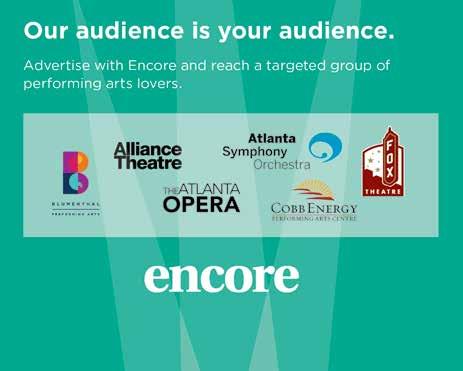
CONTACT Donna Choate 678-778-1573 donna@encoreatlanta.com
ASO | 2022/23 Musician Roster
FIRST VIOLIN
David Coucheron
concertmaster
The Mr. and Mrs. Howard R. Peevy Chair
Justin Bruns associate concertmaster
The Charles McKenzie Taylor Chair Vacant assistant concertmaster
Jun-Ching Lin assistant concertmaster Anastasia Agapova acting assistant concertmaster
Kevin Chen
Carolyn Toll Hancock
The Wells Fargo Chair
John Meisner
Christopher Pulgram
Juan R. Ramírez Hernández
Olga Shpitko
Kenn Wagner
Lisa Wiedman Yancich Sissi Yuqing Zhang
SECTION VIOLIN ‡
Judith Cox
Raymond Leung
The Carolyn McClatchey Chair
Sanford Salzinger
SECOND VIOLIN
Vacant principal The Atlanta Symphony Associates Chair
Sou-Chun Su
acting / associate principal
The Frances Cheney Boggs Chair
Jay Christy acting associate / assistantprincipal
Dae Hee Ahn
Robert Anemone Noriko Konno Clift
David Dillard Sheela Iyengar**
Eun Young Jung• Eleanor Kosek Yaxin Tan• Rachel Ostler VIOLA
Zhenwei Shi principal
The Edus H. and Harriet H. Warren Chair
Paul Murphy associate principal The Mary and Lawrence Gellerstedt Chair
Catherine Lynn assistant principal Marian Kent Yang-Yoon Kim
Yiyin Li
Lachlan McBane Jessica Oudin Madeline Sharp
CELLO
Rainer Eudeikis* principal
The Miriam and John Conant Chair
Nathalie Stutzmann
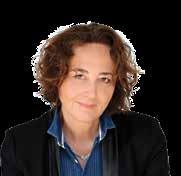
music director The Robert Reid Topping Chair
Daniel Laufer
acting / associate principal
The Livingston Foundation Chair
Karen Freer
acting associate / assistant principal
Thomas Carpenter
Joel Dallow
The UPS Foundation Chair
Peter Garrett•**
Brad Ritchie
Denielle Wilson•**
BASS
Joseph McFadden principal
The Marcia and John Donnell Chair Gloria Jones Allgood associate principal
The Lucy R. & Gary Lee Jr. Chair
Karl Fenner
Michael Kenady
The Jane Little Chair
Michael Kurth
Nicholas Scholefield•
Daniel Tosky
FLUTE
Christina Smith principal The Jill Hertz Chair
Robert Cronin associate principal C. Todd Skitch
Gina Hughes
PICCOLO Gina Hughes
aso.org | @AtlantaSymphony | facebook.com/AtlantaSymphony
Players in string sections are listed alphabetically | ‡ Rotates between sections | * Leave of absence |
| encore 10
Sir Donald Runnicles
principal guest conductor; The Neil & Sue Williams Chair
OBOE
Elizabeth Koch Tiscione
principal
The George M. and Corrie Hoyt Brown Chair
Zachary Boeding associate principal The Kendeda Fund Chair
Samuel Nemec
Emily Brebach
ENGLISH HORN Emily Brebach
CLARINET
Vacant principal
The Robert Shaw Chair
The Mabel Dorn Reeder Honorary Chair
Ted Gurch acting / associate principal Marci Gurnow
Alcides Rodriguez
E-FLAT CLARINET Ted Gurch
BASS CLARINET
Alcides Rodriguez
BASSOON
Andrew Brady* principal
The Abraham J. & Phyllis Katz Foundation Chair
Anthony Georgeson acting / associate principal
Laura Najarian Juan de Gomar
Jerry Hou
associate conductor; music director of the atlanta symphony youth orchestra
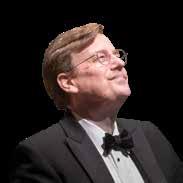
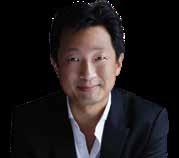
The Zeist Foundation Chair
CONTRA-BASSOON
Juan de Gomar
HORN Vacant principal
The Betty Sands Fuller Chair
Susan Welty acting / associate principal
Kimberly Gilman
Bruce Kenney
TRUMPET
Stuart Stephenson* principal
The Madeline and Howell Adams Chair
Michael Tiscione acting / associate principal
Anthony Limoncelli Mark Maliniak
William Cooper•**
TROMBONE
Vacant principal
The Terence L. Neal Chair, Honoring his dedication and service to the Atlanta Symphony Orchestra
Nathan Zgonc acting / associate principal
Jason Patrick Robins
BASS TROMBONE
Vacant
The Home Depot Veterans Chair
TUBA
Michael Moore principal
The Delta Air Lines Chair
Norman Mackenzie director of choruses
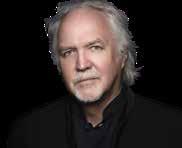
The Frannie & Bill Graves Chair
TIMPANI
Mark Yancich principal
The Walter H. Bunzl Chair
Michael Stubbart assistant principal
PERCUSSION
Joseph Petrasek principal
The Julie and Arthur Montgomery Chair Vacant assistant principal The William A. Schwartz Chair
Michael Stubbart
The Connie and Merrell Calhoun Chair
HARP Elisabeth Remy Johnson principal
The Sally and Carl Gable Chair
KEYBOARD
The Hugh and Jessie Hodgson Memorial Chair Peter Marshall †
Sharon Berenson †
LIBRARY Vacant principal
The Marianna & Solon Patterson Chair Hannah Davis asyo / assistant librarian
† Regularly engaged musician | • New this season | ** One-year appointment
Members of the Atlanta Symphony Orchestra

The Atlanta Symphony Orchestra Advisory Council is a group of passionate and engaged individuals who act as both ambassadors and resources for the ASO Board and staff. The Atlanta Symphony Orchestra extends heartfelt gratitude to the members listed on this page.
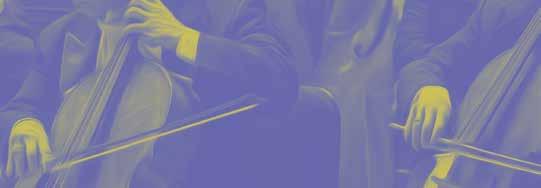
2022/23 CHAIRS
Arthur Mills, IV advisory council chair
Justin Im internal connections task force co-chair Robert Lewis, Jr. internal connections task force co-chair Frances Root patron experience task force chair Jane Morrison diversity & community connection task force co-chair Eleina Raines diversity & community connection task force co-chair Cindy Smith diversity & community connection task force co-chair
Otis Threatt diversity & community connection task force co-chair
MEMBERS
Dr. Marshall & Stephanie Abes Krystal Ahn Paul Aldo Evelyn Babey Keith Barnett Asad & Sakina Bashey Meredith W. Bell Jane Blount Cristina Briboneria Tracey Chu Donald & Barbara Defoe
Paul & Susan Dimmick Bernadette Drankoski Diana Einterz Bruce Flower John Fuller Tucker Green Caroline Hofland Justin Im Baxter Jones & Jiong Yan Brian & Ann Kimsey
Jason & Michelle Kroh Scott Lampert
Dr. Fulton Lewis III & Mr. Neal Rhoney Robert Lewis, Jr. Eunice Luke Belinda Massafra Erica McVicker
Arthur Mills IV Berthe & Shapour Mobasser Bert Mobley Caroline & Phil Moïse Anne Morgan Sue Morgan Jane Morrison Tatiana Nemo Gary Noble Bethani Oppenheimer Chris Owes
Margie Painter Ralph Paulk Regina Olchowski Eliza Quigley Eleina Raines
Felicia Rives
Frances A. Root Thomas & Lynne Saylor Jim Schroder Baker Smith Cindy Smith Peter & Kristi Stathopoulos Tom & Ani Steele Kimberly Strong Stephen & Sonia Swartz George & Amy Taylor Otis Threatt Jr. Cathy Toren Sheila Tschinkel Roxanne Varzi Robert & Amy Vassey Juliana Vincenzino Robert Walt Nanette Wenger Kiki Wilson Taylor Winn Camille Yow
For more information about becoming an Advisory Council member, please contact Cheri Snyder at cheri.snyder@atlantasymphony.org or 404.733.4904.
aso.org | @AtlantaSymphony | facebook.com/AtlantaSymphony
JOAN TOWER: 1920/2019
JESSIE MONTGOMERY: Rounds
BARTÓK: Concerto for Orchestra
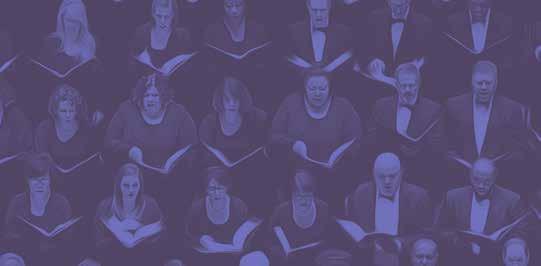
Jerry Hou, conductor
Awadagin Pratt, piano
WEBER: Der Freischütz Overture
TYSHAWN SOREY: Adagio for Wadada Leo Smith
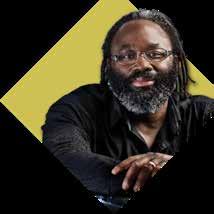


SIBELIUS: Symphony No. 2
Stephen Mulligan, conductor Timothy McAllister, saxophone
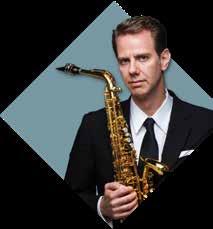
HANDEL/VIVALDI: Selections
BACH: Concerto for Oboe & Violin
Nathalie Stutzmann, conductor David Coucheron, violin Elizabeth Koch Tiscione, oboe

Nathalie Stutzmann, conductor
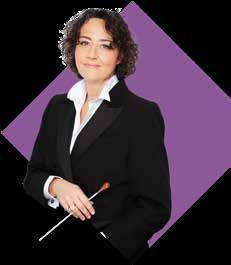
Camilla Tilling, soprano
Patricia Bardon, mezzo-soprano
Kenneth Tarver, tenor
Leon Košavić, bass Justin Austin, Jesus Robin Tritschler, Evangelist ASO Chamber Chorus
Season presented by Programs, dates and artists are subject to change.

MAR 2/4
MAR 16/18
MAR 23/25
MAR 30/ APR 1/2
Honoring the past, investing in the future
By Holly Hanchey
This year, 2023, marks the 30th Anniversary of the Talent Development Program (TDP), the ASO’s year-round musical education diversity program that provides young Black and Latinx musicians with professional-level musical training in preparation for attending top music schools and conservatories. More than 100 TDP Alumni have gone on to attend those top conservatories, and we’ve taken a moment to check in with three alumni to see where they are in their musical Imani Duhe, trumpet; Angela Leeper, bass; and Francisco Vidales, clarinet.
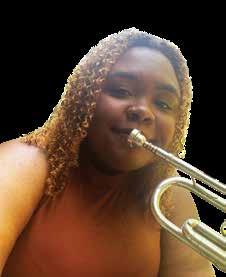
Vidales is a junior at the Jacobs School of Music at Indiana University and just finished his junior recital, receiving the Performance Certificate Award. Leeper is a senior at Jacobs School of Music and will graduate in May of this year with a major in Double Bass Performance and minors in Arts Management and Spanish. Duhe is pursuing her Master’s degree at the University of Southern California, after attending the Manhattan School of Music. In what way has the TDP impacted your life the most?
Without TDP I wouldn’t have known the plethora of careers available to me in the music world—plus, the ability to create a network of musicians that would support me for my entire life.
IMANIDUHI | encore 14
Leeper: TDP unexpectedly changed the course of my life. Before joining TDP, I never considered becoming a music major or pursuing a professional orchestra career. However, the support from my private teacher and the TDP network inspired me to pursue music to the fullest degree, and it has been an amazing journey!
Vidales: Directly speaking, the TDP impacted my life by providing many hours of experience, recitals, coaching sessions, audition preparation, and an instrument. Indirectly, the TDP helped me learn about time management, social skills, and how to carry oneself.
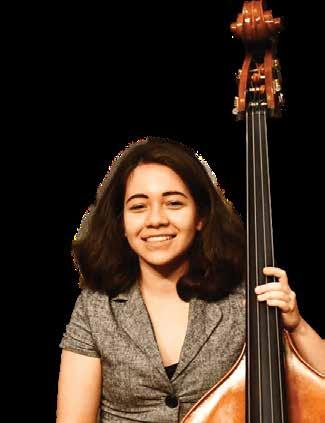
ANGELA LEEPER
When did you know you wanted to be a musician?
Duhe: When I was in the 2nd grade, I was appointed first chair of the district honor band in my town. Seeing my dad so proud of me at a young age made a huge impact on me. I wanted to keep making him proud forever.
Leeper: I knew I wanted to become involved in the orchestral world after I joined my school’s orchestra, and I saw a performance of the Atlanta Symphony Youth Orchestra in 8th grade. ASYO was the highest playing level I had witnessed at the time, as I had never been to a professional orchestra concert before. I was amazed by the performance, and I made it a goal to perform up on that stage. I joined TDP a year later and ASYO the following year.
Vidales: I knew I wanted to be a musician when I was in junior year of high school, after our final youth orchestra concert of the year. We played the 1919 Firebird Suite and it remains as one of the most memorable concerts that led me to become a musician.
FRANCISO VIDALES
What is one of your favorite memories of the TDP?
My favorite TDP memory is hanging out backstage before concerts. Those times were the moments when we were really all together, and it felt like a little family. Joking around and hanging out with the other students always felt so special.
Having a bass lesson while my teacher was in full zombie makeup for an ASO Halloween concert!
My very first recital when I got into the TDP. I came into the TDP halfway through the year and played a challenging piece that was received very well.
What has the TDP and its coaches taught you that resonates throughout your life, not just in your musical career?
My second teacher Karin Bliznik taught me how important it was to always be myself. She is such a strong woman trumpet player and taught me how to carry myself with pride and be who I am.
Leeper: TDP has taught me the importance of networking. Most people aren’t so lucky to have a built-in professional network like we do. Networking at my university has brought me a lot of insight and opportunities that I didn’t know about previously.
Vidales: Dedication, hard work, and patience yield results. There are no shortcuts. Being confident will get you a long way.
What advice do you have for current and future TDP musicians?
Duhe: You will struggle. Things will get hard. But you are stronger than any obstacle you face, and with hard work and dedication you will succeed.
Leeper: Hard work brings good results, but the best results are achieved by working hard and planning far ahead of time.
Vidales: Always practice slowly and practice constantly all the fundamentals (scales, arpeggios, etc.) to lay a solid foundation. Listen to the best musicians of instruments outside of yours. Have and maintain general knowledge outside music. Read books.

aso.org | @AtlantaSymphony | facebook.com/AtlantaSymphony
| encore 16
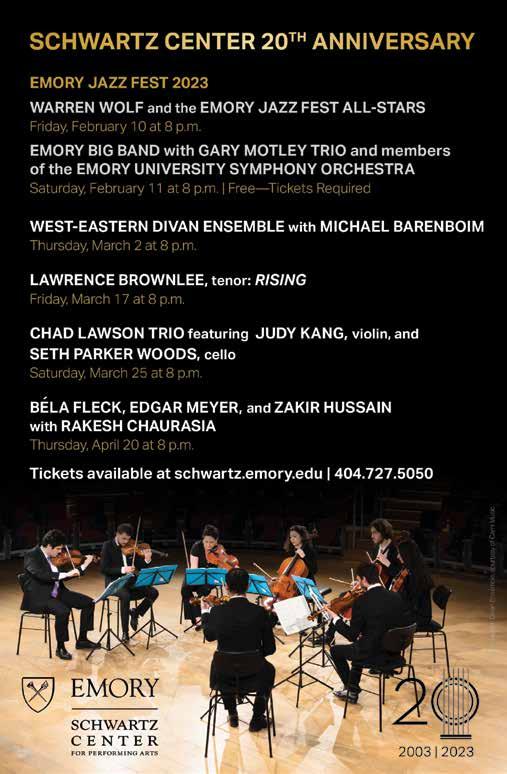
We are deeply grateful to the following leadership donors whose generous support has made the Atlanta Symphony Orchestra's season possible.


|
ASO
SEASON SPONSORS
FEBRUARY 11 | The ASO welcomes the Susan G. Komen Breast Cancer Foundation* for a ”PINK NIGHT”. Be sure to join us wearing pink for an evening celebrating women in classical music with conductor Han-Na Chang, violinist Sayaka Shoji and composer Anna Clyne.

FEBRUARY 24 | The ASO spotlights the Black Greek Letter Organizations of the National Pan-Hellenic Council, collectively referred to as the Divine Nine*. We share an evening celebrating the compositions and legacy of African-American composer William Levi Dawson. Special presentation by Divine Nine step teams.



MARCH 4 | The ASO hosts the Atlanta HBCU Alumni Alliance* to support the mission of local and national HBCUs through scholarship fundraising, alumni reclamation, student recruitment and programs that promote higher education. The ASO will showcase pianist Awadagin Pratt and Rounds, a piece by Jessie Montgomery.

* a portion of the ticket sales will be donated back to these partner organizations

aso.org | @AtlantaSymphony | facebook.com/AtlantaSymphony
Concerts of Thursday, February 2, 2023 8:00 PM Friday, February 3, 2023 8:00 PM
NATHALIE STUTZMANN, conductor
EDGAR MOREAU, cello
SERGEI PROKOFIEV (1891–1953) Sinfonia concertante for Cello and Orchestra, Op. 125 (1951) 37 MINS
I. Andante II. Allegro giusto III. Andante con moto — Allegretto — Allegro marcato
Edgar Moreau, cello INTERMISSION 20 MINS
DMITRI SHOSTAKOVICH (1906–1975) Symphony No. 5 in D Minor, Op. 47 (1937) 50 MINS
I. Moderato II. Allegretto III. Largo IV. Allegro non troppo
Thursday’s concert is dedicated to PATRICK & SUSIE VIGUERIE in honor of their extraordinary support of the 2021/22 Annual Fund.
The use of cameras or recording devices during the concert is strictly prohibited. Please be kind to those around you and silence your mobile phone and other hand-held devices.
aso.org | @AtlantaSymphony | facebook.com/AtlantaSymphony | feb2/3
20
Sinfonia concertante for Cello and Orchestra, Op. 125
In addition to the solo cello, Sinfonia concertante is scored for two flutes (one doubling piccolo), two oboes, two clarinets, two bassoons, four horns, two trumpets, three trombones, tuba, timpani, percussion, celeste and strings.
A Living Nightmare
by Noel Morris Program Annotator
First ASO performances: March 21–24, 1974
Robert Shaw, conductor Lynn Harrell, cello Most recent ASO performances: September 21–23, 1989
Yoel Levi, conductor Christopher Rex, cello
Sergei Prokofiev and Dmitri Shostakovich were products of a tumultuous age. Born fifteen years apart, they shared many of the same teachers, all of whom knew something about upheaval. Changing with the times, their school, the St. Petersburg Conservatory, was renamed the Petrograd Conservatory, then the Leningrad Conservatory, and finally the N. A. Rimsky-Korsakov St. Petersburg State Conservatory. The people within its walls endured food scarcity, unheated rooms, revolutions, civil war, and a Nazi siege, not to mention the purges being wrought by their own government.
In his 2010 book, historian Norman Naimark drew comparisons between Soviet dictator Joseph Stalin and Adolph Hitler, stating that “both [men] chewed up the lives of human beings in the name of a transformative vision of Utopia. Both destroyed their countries and societies, as well as vast numbers of people inside and outside their own states. Both, in the end, were genocidaires.”
Stalin’s scourge was as random as it was widespread. Between 1932–1933, he removed a bountiful grain harvest, causing the deaths of millions of Ukrainians. (The United Nations later placed the death toll of this famine, known as the Holodomor, at seven to ten million.) He rounded up and slaughtered countless Russians, too.
“In some cases, a quota was established for the number to be executed, the number to be arrested,” said Naimark. “Some officials overfulfilled as a way of showing their exuberance.” Using terror as his instrument, Stalin seeded Soviet society with paranoia, encouraging friends and family members to turn on one another. Through it all, the Party required that art be “easily understood” and serve to educate the worker about the joys of Soviet life. Creatives who failed to comply could face charges of spying or treason. The punishment was imprisonment or death.
Prokofiev Sinfonia Concertante
In the days after the Bolsheviks came to power, the revolutionaries-
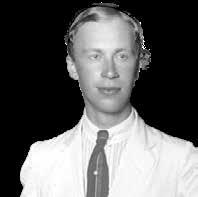
notes
|
ontheprogram
PROKOFIEV ESTATE 21
turned-statesmen had a problem: how to gain legitimacy. As they worked to invent a new form of government, they began to recognize the importance of soft power—gaining leverage through economic or cultural assets. Already, Russia’s best composers were living in the West. Rachmaninov had gone into exile. Stravinsky was the toast of Paris. Only Prokofiev was unsettled. Living in Europe, he was struggling as a composer. His music was edgy and experimental—which had not won him allies—and he was forced to make a living as a pianist.
In 1924, he became a Christian Scientist, which seems to have prompted a shift toward the more tuneful style of Peter and the Wolf (1936) and Romeo and Juliet (1938). It was a style that naturally aligned with Soviet dictates on art. Over ten years, Moscow courted him with concerts, unrestricted access between East and West, and a handsome apartment. Most importantly, the Party gave him lots of work as a composer. Out of convenience, he moved his family back to Russia. Then in 1938, Party officials seized his travel documents, closing his door to the West forever.
World War II brought a different kind of misery to the Soviet people. Hitler’s army laid siege to Leningrad. Hundreds of thousands died of starvation, and millions of Russian Jews were deported to Nazi camps. The war did offer some respite from Stalin’s social engineering—he was too occupied with military matters to attack composers. That changed in 1948. On February 10 of that year, the Central Committee of the Communist Party issued a decree rebuking Prokofiev, Shostakovich, and Aram Khachaturian, among others, for committing the “crime of formalism.” Facing public condemnation for their “renunciation of the basic principles of classical music,” they lost concert engagements, and many of their works were banned.
Prokofiev lost his pension and fell into financial straits—but he did have friends. One of them was the brilliant and rather rebellious young cello virtuoso Mstislav Rostropovich. They had met in 1947 when Rostropovich played Prokofiev’s 1938 Cello Concerto. (The piece had been sorely neglected, and the composer was grateful for the performance.) It inspired him to write a Cello Sonata for the twentyyear-old “Slava.” In 1951, Prokofiev received 20,000 rubles to write a three-movement work. For this, he leaned on his friend for technical advice and repurposed material from the 1938 Cello Concerto for his Second Cello Concerto. After its premiere, Prokofiev withdrew the score and expanded the role of the orchestra, rechristening the
aso.org | @AtlantaSymphony | facebook.com/AtlantaSymphony
| encore 22
piece Sinfonia concertante or Symphony Concerto.
By this time, Prokofiev’s health was in decline. He had suffered chronic headaches, dizziness, and nausea since 1945. Nevertheless, he threw himself into new projects and left many unfinished at his death, including another piece for Slava. Sadly, Prokofiev never again stepped out from the shadow of Joseph Stalin; both men died on March 5, 1953. With the passing of the tyrant, all the prominent Russian musicians, all the news coverage, and all the flowers that could be mustered were diverted to a grand state funeral. Prokofiev’s family held a small service, draping the composer’s casket in paper flowers.
Symphony No. 5 in D Minor, Op. 47
Symphony No. 5 is scored for piccolo, two flutes, two oboes, two clarinets, E-flat clarinet, two bassoons, contrabassoon, four horns, three trumpets, three trombones, tuba, timpani, percussion, harp, piano, celeste and strings.
A Soviet Artist’s Response to Just Criticism
First ASO performance: November 15, 1955
Henry Sopkin, conductor
Most recent ASO performances: January 28–February 1, 2020 Karina Canellakis, conductor
Dmitri Shostakovich was 15 years younger than Prokofiev and much quicker to run afoul of Stalin. While Prokofiev had had a life in the West, Shostakovich was only 11 when the Bolsheviks seized power. He entered the Petrograd Conservatory two years later. By the time he was 19, his First Symphony was being performed by Russia’s premier orchestras.
Shostakovich became a poster child for Soviet art, bolstered by a heavy workload of commissions. By the time he was 24, a friend had noted that he was looking gaunt and worn out. What the world didn’t know was that young Shostakovich, beyond the multitude of concerts and public appearances, had begun a project for himself, an opera called Lady Macbeth of the Mtsensk District. Basing the piece on a Party-approved satirical novella, he drafted a potent score framing a super-charged story of love, sex, and murder. The show premiered on January 22, 1934, and was among the most successful launches in opera history. Night after night, Leningrad audiences packed the house. Soon it opened in Moscow and within two years, had made its way to the United States, Europe and South America. By January of 1936, there were two separate productions of Lady Macbeth running in Moscow alone. That’s when Stalin entered the picture. On January 26, he arrived at the Bolshoi Theater to see the show and walked out mid-performance.
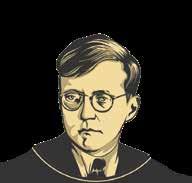 ADOBE STOCK
ADOBE STOCK
encoreatlanta.com | 23

Days later, the state-run newspaper, Pravda, published a blistering article about Shostakovich titled “Muddle Instead of Music.” Overnight, musicians across the Soviet Union dropped him from their programs; colleagues stopped speaking to him, and people crossed the street to avoid him. Just as his wife, Nina, was expecting their first child, the composer’s income fell 75 percent. But Shostakovich was not entirely contrite. He threw himself into writing his Fourth Symphony—a marvelous and terrifying piece of music that went into rehearsal with the Leningrad Philharmonic later that year. Under pressure from a skittish music community, the composer withdrew the piece and stowed it away, keeping it hidden for the next 25 years.
“He was scared of the Gulag,” said Atlanta Symphony Orchestra Music Director Nathalie Stutzmann. “His suitcase was packed in case they came for him in the night. He was scared for his whole family and made a public declaration to serve the regime and be a good composer, and praise Stalin.”
At the same time, Shostakovich desperately needed to stage a comeback, and he did it with the Fifth Symphony. Smacking his predicament right on the nose, he subtitled his new piece “A Soviet Artist’s Response to Just Criticism.” It was a brilliant solution to a sticky problem—and a sticky problem for many a musician. Is the Fifth Symphony an act of contrition or is it an act of defiance? Or is it both? Ultimately, the way a conductor hears the symphony informs her interpretation.
“The Fifth Symphony was his way of finding firmer ground,” said Stutzmann. “Officially, it appears and sounds for the Stalinists, and it was a triumphant success. Shostakovich had ‘reformed.’”
Still, “the non-partisans in the audience got the real message,” she said. “The sadness, stress, anxiousness, and depression of the first movement. The caricature of a march in the second movement. The deeply moving third movement, which clearly is a requiem for the dead victims of Stalin. “The final movement sounds triumphant, but whose triumph? One can easily understand it’s a rush against the power; it’s a victory scream for liberty!”
The Leningrad Philharmonic gave the first performance of Shostakovich’s Symphony No. 5 on November 21, 1937, and the audience went wild. The authorities uplifted Shostakovich as a reformed citizen. And Dmitri Shostakovich lived to write another day.
encoreatlanta.com | 25
NATHALIE STUTZMANN, CONDUCTOR
See biography on page 7
EDGAR
MOREAU, CELLO
Born in 1994, Edgar Moreau began playing the cello at the age of four. He studied with Philippe Muller at the Conservatoire National Supérieur de Musique de Paris and later continued at the Kronberg Academy under the guidance of Frans Helmerson. At the age of 11 he made his debut with the Teatro Regio Orchestra in Torino, playing Dvořák’s Cello Concerto.
Moreau performs with world-renowned orchestras such as the Roma Santa Cecilia Orchestra, Filarmonica della Scala, London Symphony Orchestra, Philharmonia Orchestra, Royal Philharmonic, Los Angeles Philharmonic, Seattle Symphony, Philadelphia Orchestra, Montreal Symphony, among others.
He has collaborated with acclaimed conductors including Gustavo Dudamel, Valery Gergiev, Francois-Xavier Roth, Tugan Sokhiev, Manfred Honeck, Lahav Shani, Mikko Franck, Jakub Hrůša, Alain Altinoglu, Pablo-Heras Casado, Susanna Mälkki Vasily Petrenko, Jukka- Pekka Saraste, and Lionel Bringuier.
Moreau is a recipient of many musical awards, including the Academie Maurice Ravel Prize 2011, and the Banque Populaire Foundation, and First Prize in the 2014 Young Concert Artists International Auditions, among others.
Edgar Moreau plays on a David Tecchler cello from 1711. His bow was made by Dominique Peccatte.

aso.org | @AtlantaSymphony | facebook.com/AtlantaSymphony
JACKY
26 | meettheartists
AZOULAI

Concerts of Thursday, February 9, 2023 8:00 PM Saturday, February 11, 2023 8:00 PM
HAN-NA CHANG, conductor SAYAKA SHOJI, violin
ANNA CLYNE (b. 1980)
This Midnight Hour (2015) 12 MINS SERGEI PROKOFIEV (1891–1953) Violin Concerto No. 1 in D Major, Op. 19 (1917) 22 MINS
I. Andantino
II. Scherzo: Vivacissimo III. Moderato — Allegro moderato Sayaka Shoji, violin
INTERMISSION 20 MINS
MODEST MUSSORGSKY (1839–1881) Pictures at an Exhibition (1874) 34 MINS (Orchestrated by Maurice Ravel—1923) Promenade
I. The Gnome Promenade
II. The Old Castle Promenade
III. Tuileries (Children Quarrelling After Play) IV. Cattle Promenade
V. Ballet of the Unhatched Chicks VI. Samuel Goldenberg and Schmuÿle VII. Limoges. The Market Place (Important News) VIII. Catacombs (A Roman Sepulchre) — With the Dead in a Dead Language IX. The Hut on Hen’s Legs (Baba Yaga)
X. The Great Gate of Kiev
aso.org | @AtlantaSymphony | facebook.com/AtlantaSymphony
28 | feb9/11
This Midnight Hour
by
Noel Morris Program Annotator
This Midnight Hour is scored for piccolo, two flutes, two oboes, two clarinets, two bassoons, four horns, two trumpets, three trombones, tuba, timpani, percussion and strings.
These are the first ASO performances.
Grammy-nominated Anna Clyne is one of the most in-demand composers today, working with orchestras, choreographers, filmmakers, and visual artists around the world.

Clyne has been commissioned and presented by the world’s most dynamic and revered arts institutions, including the Barbican, Carnegie Hall, Kennedy Center, Los Angeles Philharmonic, MoMA, Philharmonie de Paris, Royal Concertgebouw Orchestra, San Francisco Ballet, and the Sydney Opera House; and her music has opened such events as the Edinburgh International Festival, The Last Night of the Proms, and the New York Philharmonic’s 2021–2022 season.
Clyne often collaborates on creative projects across the music industry, including Between the Rooms, a film with choreographer Kim Brandstrup and LA Opera, as well as the Nico Project at the Manchester International Festival, a stage work about pop icon Nico’s life that featured Clyne’s reimagining of The Marble Index for orchestra and voices. Clyne has also reimagined tracks from Thievery Corporation’s The Cosmic Game for the electronica duo with orchestra, and her music has been programmed by such artists as Björk. Several recent projects have explored Clyne’s fascination with visual arts, including Color Field, inspired by the artwork of Mark Rothko; Abstractions, inspired by five contemporary artworks; and Woman Holding a Balance, a film collaboration with artist Jyll Bradley. Other recent collaborators include such notable musicians as Jess Gillam, Martin Fröst, Pekka Kuusisto, and Yo-Yo Ma.
In 2022–2023, Clyne serves as Composer-in-Residence with the Philharmonia Orchestra and the Trondheim Symphony Orchestra, as well as the Helsinki Philharmonic Orchestra starting in the 2023–2024 season. Past residencies include the Baltimore Symphony Orchestra, Chicago Symphony Orchestra, L’Orchestre national d’Île-de-France, and the Scottish Chamber Orchestra.
Clyne’s music is represented on several labels and her works Prince of Clouds and Night Ferry were nominated for 2015 Grammy Awards. Her cello concerto DANCE, recorded by soloist Inbal Segev, the London Philharmonic Orchestra, and Marin Alsop, has garnered more than eight million plays on Spotify. Clyne’s music is published exclusively by Boosey & Hawkes. www.boosey.com/clyne
encoreatlanta.com | 29
From the Composer:
The opening to This Midnight Hour is inspired by the character and power of the lower strings of L’Orchestre national d’Île de France. From here, it draws inspiration from two poems. Whilst it is not intended to depict a specific narrative, my intention is that it will evoke a visual journey for the listener.
La musica - by Juan Ramón Jiménez translated by Robert Bly:
La musica; -mujer desnuda, corriendo loca por la noche pura! -
Music –a naked woman running mad through the pure night
Harmonie du soir - by Charles Baudelaire translated by William Aggeler:
Voici venir les temps où vibrant sur sa tige Chaque fleur s’évapore ainsi qu’un encensoir; Les sons et les parfums tournent dans l’air du soir; Valse mélancolique et langoureux vertige!
Chaque fleur s’évapore ainsi qu’un encensoir;
Le violon frémit comme un coeur qu’on afflige; Valse mélancolique et langoureux vertige!
Le ciel est triste et beau comme un grand reposoir. Le violon frémit comme un coeur qu’on afflige, Un coeur tendre, qui hait le néant vaste et noir!
Le ciel est triste et beau comme un grand reposoir; Le soleil s’est noyé dans son sang qui se fige.
Un coeur tendre, qui hait le néant vaste et noir, Du passé lumineux recueille tout vestige!
Le soleil s’est noyé dans son sang qui se fige... Ton souvenir en moi luit comme un ostensoir!
The season is at hand when swaying on its stem
Every flower exhales perfume like a censer; Sounds and perfumes turn in the evening air; Melancholy waltz and languid vertigo!
Every flower exhales perfume like a censer; The violin quivers like a tormented heart; Melancholy waltz and languid vertigo!
aso.org | @AtlantaSymphony | facebook.com/AtlantaSymphony
| encore 30
The sky is sad and beautiful like an immense altar.
The violin quivers like a tormented heart, A tender heart, that hates the vast, black void!
The sky is sad and beautiful like an immense altar; The sun has drowned in his blood which congeals...
A tender heart that hates the vast, black void Gathers up every shred of the luminous past! The sun has drowned in his blood which congeals... Your memory in me glitters like a monstrance!
Violin Concerto No. 1 in D Major, Op. 19
In addition to the solo violin, this concerto is scored for two flutes (one doubling piccolo), two oboes, two clarinets, two bassoons, four horns, two trumpets, tuba, timpani, percussion, harp and strings.
First ASO performances: February 27–March 2, 1969 Michael Zearott, conductor Edith Peinemann, violin
Most recent ASO performances: November 10–12, 2016 Robert Spano, conductor David Coucheron, violin
The year 1917 proved to be among the most consequential of the 20th century. As the Russian people rang in the year, the Tsar’s empire spanned nearly nine million square miles. His armed forces were racking up terrible losses in World War I, and bread and coal were scarce in the cities. In the ensuing months, demonstrations and work stoppages became a daily occurrence. Workers organized into soviets. In March, the Romanov dynasty fell, ceding power to the Provisional Government, which was a parliamentary body populated (mainly) by wealthier members of the middle class. In April, Vladimir Lenin returned from exile. Building a coalition among workers across a fragmented society, he led a second revolution in October, giving rise to the Soviet Union.
Not a political creature, Sergei Prokofiev went on with his life during that fraught season. In early 1917, his new opera The Gambler went into rehearsal at the famed Mariinsky Theater in Petrograd. For much of that year, he avoided the unrest and retreated into nature. He bought a telescope and became an avid stargazer. He took a river cruise through pristine pine forests and spent time in a popular resort town in the Caucasus Mountains (in fact, he was stranded there as the ravages of war and revolution made returning to the city untenable). Throughout that historic year, new works poured out of the 26-year-old composer, including the “Classical” Symphony, a cantata, two piano sonatas, the Visions fugitives and the Violin Concerto No. 1.
By the time Prokofiev returned to Moscow and Petrograd, radical

ESTATE encoreatlanta.com | 31
PROKOFIEV
social transformation was underway, which didn’t offer a particularly amenable environment for giving concerts. Serge Koussevitzky, who was building a publishing company, paid the composer for a number of his recent works. With cash in his pocket and a suitcase full of compositions, Prokofiev headed to America. There, he was met with tepid interest and gave some concerts but found it a struggle. The Violin Concerto remained in the suitcase. He tried his luck in Europe, eventually landing in Paris, where he reconnected with Koussevitzky, who was, by then, quite the item in Paris. The self-styled maestro had started up a biannual concert series, the Grands Concerts Symphoniques Koussevitzky, where he presented standard repertoire alongside works by contemporary composers. It was at one of these concerts that he conducted the belated premiere of Prokofiev’s Violin Concerto No. 1 in October of 1923. In 1925, he conducted the American premiere of the Concerto with the Boston Symphony, where he would become a champion of 20th-century music.
First ASO performance: March 10, 1953 Henry Sopkin, conductor
Most recent ASO performances: March 19–21, 2015 Jacomo Bairos, conductor
Pictures at an Exhibition
Pictures at an Exhibition is scored for three flutes (two doubling piccolo), three oboes (one doubling English horn), two clarinets, bass clarinet, alto saxophone, two bassoons, contrabassoon, four horns, three trumpets, three trombones, tuba, timpani, percussion, two harps, celeste and strings.
In the spring of 1874, Modest Mussorgsky lumbered into an art show to view the life’s work of a close friend. Victor Hartmann, an architect, designer, and painter, had died suddenly at the age of 39; Mussorgsky was heartbroken. As the composer strolled through the exhibition, a flood of piano music came to him.

“I can hardly manage to scribble it down on paper,” he wrote. Capturing the scene in music, he composed ten Hartmanninspired tableaux with an additional tune (“Promenade”) representing himself, strolling, thinking, and reflecting as he passed from picture to picture.
Sadly, the 35-year-old Mussorgsky was not long for the world. He abused alcohol and eventually lost his job and his home. In his final days, the Russian artist Ilya Repin captured Mussorgsky’s likeness, leaving a lasting impression of an unkempt man with a bright-red nose. Still, the composer’s friends remembered him as a formidable talent. Going to great lengths to preserve Mussorgsky’s legacy, Nicolai RimskyKorsakov edited and completed a number of his works. This included
aso.org | @AtlantaSymphony | facebook.com/AtlantaSymphony
WIKIMEDIA
| encore 32
the piano suite Pictures at an Exhibition, published by Rimsky in 1886.
In 1922, conductor Serge Koussevitzky hired master orchestrator Maurice Ravel to create a “colorized” version of Pictures, recasting the piano pieces as a mighty orchestral suite. Due in large part to its success, many other composers have made attempts at outdoing Ravel. Today, there are dozens of arrangements of these piano pieces, including for jazz band, Chinese orchestra, rock band and many alternative orchestral arrangements. None has enjoyed the popularity of Ravel’s 1922 rendering.
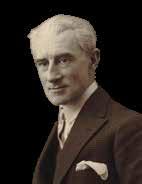
Much of Victor Hartmann’s work, which so inspired Mussorgsky, was produced during travels abroad. The 1874 exhibition displayed paintings and fanciful design sketches, including ideas for costumes and architecture.
I. “Gnomus” is a Christmas ornament carved in the shape of a nutcracker—a gnome—whose twisted legs suggest a life of pain and torment.
II. “The Old Castle” is based on two pictures (now lost) of French castles and uses a troubadour’s song suggesting a scene from the distant past.
III. “Tuileries” depicts children playing and bickering in the park in Paris.
IV. “Bydlo,” the Polish word for “cattle,” comes from Hartmann’s time in Poland. The picture shows two oxen pulling a heavy wooden cart.
V. “Ballet of the Unhatched Chicks” is an egg-shaped costume-design for child dancers for the ballet Trilby.
VI. “Samuel Goldenberg and Schmuyle” comes from two portraits painted at the Jewish ghetto in Sandomierz, Poland. The man in the fur-trimmed yarmulke is wealthy—his music is overbearing. The other man is poor. He lowers his head; his music is meek and pleading.
VII. “Limoges” is a scene from the village marketplace where bustling town-folk chatter and gossip.
VIII. “Catacombs” shows two gentlemen (Hartmann and a friend) in underground Paris. In it, a caretaker holds a lantern that bathes the heavy space in a hazy, orange glow. To the right is a wall of skulls.
IX. “The Hut on Hen’s Legs” is a design for a clock (resembling a cuckoo clock) based on the home of the witch Baba Yaga. Here, Mussorgsky’s music is less about Hartmann’s timepiece than the flight of the terrifying crone of Slavic folklore.
X. The Great Gate of Kiev* is a large arch flanked by two smaller arches and a bell tower. Hartmann entered this design in a contest sponsored by Tsar Alexander II. The gate was never built.
*Note: Victor Hartmann and Modest Mussorgsky were Russian artists and used the Russian spelling of the Ukrainian capital, Kyiv, in the titles of their works.
WIKIMEDIA
encoreatlanta.com | 33
HAN-NA CHANG, CONDUCTOR
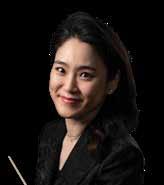
Artistic Leader and Chief Conductor of the Trondheim Symfoniorkester & Opera in Norway since 2017, and newly appointed Erste Gastdirigentin (Principal Guest Conductor) of the Symphoniker Hamburg – Laeiszhalle Orchester commencing 202223 season, Han-Na Chang’s international career spans nearly three decades. She first gained international recognition at the age of 11, when she won the First Prize and the Contemporary Music Prize at the Fifth Rostropovich International Cello Competition in Paris in 1994, awarded unanimously by the jury led by Mstislav Rostropovich.
She made her formal conducting debut in 2007, at the age of 24. She served as Principal Guest Conductor of the Trondheim Symfoniorkester & Opera from 2013-17, and as the Music Director of the Qatar Philharmonic Orchestra in 2013-14.
As a guest conductor, Han-Na Chang’s upcoming appearances include the Danish National Symphony Orchestra, Rotterdam and Oslo Philharmonic Orchestras, Royal Scottish National Orchestra, Singapore, Atlanta, Vancouver, Detroit and Milwaukee Symphony Orchestras, among others.
Han-Na Chang was born in Suwon, South Korea in December 1982. Her family moved to New York in 1993 where she attended the Julliard School. She studied with Mischa Maisky and counts Mstislav Rostropovich and Giuseppe Sinopoli among the most influential mentors of her formative years.
aso.org | @AtlantaSymphony | facebook.com/AtlantaSymphony
OLE WUUTUDAL 34 | meettheartists
SAYAKA SHOJI, VIOLIN
Sayaka Shoji has become internationally recognized for her unique artistic versatility and detailed approach to her chosen repertoire. Born in Tokyo, Shoji moved to Siena, Italy when she was three. She studied at Accademia Musicale Chigiana and Cologne’s Musikhochschule and made her European debut with Lucerne Festival Strings and Rudolf Baumgartner at the Lucerne Festival and then at the Musikverein, Vienna at the age of 14.
Since winning first prize at the Paganini Competition in 1999, Sayaka Shoji has been supported by leading conductors such as Zubin Mehta, Lorin Maazel, Semyon Bychkov, Mariss Jansons and Yuri Temirkanov to name a few. She has also worked with renowned orchestras including the Israel Philharmonic, Philharmonia Orchestra, Cleveland Symphony Orchestra, London Symphony Orchestra, Berlin Philharmonic, among others.

Shoji has released eleven albums on Deutsche Grammophon including Prokofiev, Sibelius and Beethoven Violin Concertos with the St. Petersburg Philharmonic Orchestra conducted by Yuri Temirkanov. Fall of 2022 will mark the release of a new album of Mozart’s violin sonatas, following her previous album of complete Beethoven Sonatas for Piano and Violin.
Sayaka Shoji plays a Stradivarius ‘Recamier’ c.1729, kindly loaned to her by Ueno Fine Chemicals Industry Ltd.
encoreatlanta.com | 35
KISHIN SHINOYAMA
Concerts of Thursday, February 23, 2023 8:00 PM Friday, February 24, 2023 8:00 PM
RYAN BANCROFT, conductor CONRAD TAO, piano
ZOLTÁN KODÁLY (1882–1967) Háry János Suite (1926) 22 MINS I. Prelude: The Fairy Tale Begins II. The Viennese Musical Clock III. Song IV. The Battle and Defeat of Napoleon V. Intermezzo VI. Entrance of the Emperor and his Court
MAURICE RAVEL (1875–1937) Piano Concerto in G Major (1931) 23 MINS I. Allegramente II. Adagio assai III. Presto Conrad Tao, piano
INTERMISSION 20 MINS
WILLIAM DAWSON (1899–1990) Negro Folk Symphony (1934, rev. 1952) 32 MINS
I. The Bond of Africa II. Hope in the Night III. O Le’ Me Shine, Shine Like a Morning Star!
Thursday’s concert is dedicated to RICHARD H. DELAY & DR. FRANCINE D. DYKES in honor of their extraordinary support of the 2021/22 Annual Fund.
The use of cameras or recording devices during the concert is strictly prohibited. Please be kind to those around you and silence your mobile phone and other hand-held devices.
aso.org | @AtlantaSymphony | facebook.com/AtlantaSymphony
36 | feb23/24
Háry János Suite
The Háry János Suite is scored for three flutes (all doubling piccolo) two oboes, two clarinets, e-flat clarinet, alto saxophone, two bassoons, four horns, three trumpets, three cornets, three trombones, tuba, timpani, percussion, piano, celeste, cimbalom and strings.
by Noel Morris Program Annotator
First ASO performance: November 23, 1964
Henry Sopkin, conductor
Most recent ASO performances: September 20–22, 1995
Yoel Levi, conductor
At the start of World War I, Zoltán Kodály was a citizen of AustriaHungary, the second largest country in Europe. Within six years, his homeland would be dismantled. The Paris Peace Conference aspired to redraw the European map to diffuse further conflict. In truth, it ossified winners and losers. For Hungary, the price of peace was high: the Treaty of Trianon sheared off more than 70 percent of its territory, leaving three million ethnic Hungarians outside its borders. With the stroke of a pen, a nation whose boundaries had remained virtually unchanged for 1100 years was abolished for millions of citizens. Six years later, Zoltán Kodály set out to write an opera in his native tongue.
As a youth, Zoltán had been drawn to literature. At the same time, making music was an everyday part of family life. He played violin, piano, and cello and served as a choir boy at the local cathedral. He was still a schoolboy when he started writing music. At the age of 18, he headed off to the University of Sciences in Budapest. But that lasted for only two years when he transferred to the Academy of Music.
At the age of 22, Zoltán Kodály embarked upon a project that galvanized an academic field and staved off the loss of a rich musical tradition. With Thomas Edison’s wax cylinder phonograph in tow, he traveled into remote areas of Hungary, moving from village to village to record, notate, and preserve what had been a strictly oral tradition of folk music.
Unlike the popular tunes of the urban Romani, which had been circulating through cafes under the label “Hungarian,” the traditional music of rural Hungary had remained unknown and untouched by the world at large. Together with his friend and fellow composer Bela Bartók, Kodály preserved thousands of songs. In 1906, he earned his Ph.D. with a thesis titled “Strophic Construction of Hungarian Folk Song” (this essentially describes a song with multiple verses). Soon after graduation, he joined the faculty.

encoreatlanta.com | 37
In 1926, Kodály issued a comic opera based on János Garay’s epic poem The Veteran. The story paints a portrait of a braggadocious barfly who likes to spin a yarn about his own military and romantic exploits. In the opera, Háry explains that he once wooed Empress Marie Louise, wife of Napoleon, and singlehandedly defeated her husband’s army. He goes on to describe his former life as a wealthy and powerful man.
“That his stories are not true is irrelevant,” wrote Kodály. “For they are the fruit of a lively imagination, seeking to create, for himself and for others, a beautiful dream world.”
Háry János opens with a great orchestral sneeze—a gesture, according to Hungarian tradition, that verifies the teller’s tale. Of course, Kodály uses the sneeze with a wink. The beauty of the bedraggled Háry János is not his heroism but his capacity to be “a king in the kingdom of his dreams.” Adding atmosphere to his rumination, the opera resounds with Hungarian folk songs (notice, in the third movement, the use of the cimbalom, a Hungarian dulcimer).
In 1927, the composer extracted six movements to create the present orchestral suite. Because most singers are not trained to sing in the Hungarian language, the suite from Háry János is heard far more often than the opera.
First ASO performance: January 10, 1963 Henry Sopkin, conductor Philippe Entremont, piano
Most recent ASO performances: May 2–4, 2019 Lionel Bringuier, conductor Lise de la Salle, piano
Piano Concerto in G Major
In addition to the solo piano, this concerto is scored for piccolo, flute, oboe, English horn, clarinet, e-flat clarinet, two bassoons, two horns, trumpet, trombone, timpani, percussion, harp and strings.
At the end of World War I, the 369th Infantry Regiment set off an artistic revolution in France. Nicknamed the Harlem Hellfighters, the regiment gained a reputation for ferocity on the battlefield, and for circulating a new and beguiling kind of music called jazz. Marching thousands of miles through the French countryside, the Hellfighters ‘band captivated civilians with their syncopated rhythms and peculiar style. After the War, many jazz pioneers settled in Montmartre where they could work and thrive beyond the clutches of Jim Crow. And their music acquired a level of respectability that had not been possible in the United States.
By 1928, jazz was part of French nightlife. When composer Maurice Ravel traveled to New York, he was eager to make a musical
aso.org | @AtlantaSymphony | facebook.com/AtlantaSymphony
| encore 38
pilgrimage to Harlem and enlisted the company of the local celebrity George Gershwin.
The 29-year-old Gershwin had been a guest at Ravel’s 53rd birthday party where he trotted out one of his most popular party tricks— he sat at the piano and played his Rhapsody in Blue. Ravel was bowled over. Together they made several jaunts to the jazz clubs of Harlem. At the same time, Ravel published an essay in Musical Digest, scolding his American hosts: “You Americans take jazz too lightly,” he wrote. “You seem to feel that it is cheap, vulgar, momentary. In my opinion it is bound to lead to the national music of the United States.”
Ravel’s American tour of 1928 took him to more than twenty cities where he played and conducted his works. The following year, he began composing the Piano Concerto in G Major.

Much has been made of the jazz influence in this and other interwar compositions by Ravel, to which he replied, “What is being written today without the influence of jazz?” In truth, Ravel was a cosmopolitan. To that point, he acknowledged the spirit of Mozart and Saint-Saëns in this piece. It seems he also made a hearty nod to jazz and to Gershwin, and even included a Basque folk tune (Ravel had toyed with the idea of writing a Basque piano concerto before the war). More than anything, the Concerto in G Major reflects the spirit of an age when creative people from around the world converged in Paris, a decade which F. Scott Fitzgerald christened the “Jazz Age.”
Negro Folk Symphony
Negro Folk Symphony is scored for piccolo, two flutes, two oboes, English horn, two clarinets, e-flat clarinet, bass clarinet, two bassoons, contrabassoon, four horns, three trumpets, three trombones, tuba, timpani, percussion, harp and strings.
First ASO performance: March 24, 1966
Henry Sopkin, conductor
Most recent ASO performance: March 3–5, 2005
Robert Spano, conductor
The story of composer William Dawson parallels a dramatic chapter in American history. His father was born into slavery and never learned to read. Young William left home at 13 to enter a precollegiate program at the Tuskegee Institute in Tuskegee, Alabama. There, he became a multi-instrumentalist while pursuing academic studies under the guidance of the school president, the famed educator and intellectual Booker T. Washington. As a teen, Dawson supported himself as a field hand until he earned his bachelor’s degree from Horner Institute of Fine Arts in Kansas City. He earned
WIKIMEDIA
encoreatlanta.com | 39
a master’s degree from the American Conservatory of Music in Chicago. All along, he gained a reputation as a serious composer.
In 1931, he returned to the Tuskegee Institute to organize and head up the School of Music and direct the school’s vocal ensembles. In the 1931–1932 catalogue, he outlined the choir’s role at the school, stating that “Much stress is put on the interpretation and singing of Negro melodies and other folk music. The choir rehearses daily and sings in the Institute Chapel every Sunday morning and evening, and on other important occasions.” In 1932, the Tuskegee Choir sang at the grand opening of Radio City Music Hall in New York City and then at Carnegie Hall. After performing for President-elect Franklin Roosevelt, they headed southward, stopping to give concerts in Philadelphia and at the White House in Washington, D.C. After the tour, Dawson turned his attention to completing his Negro Folk Symphony.

On November 20, 1934, Dawson returned to Carnegie Hall, this time for the world premiere of the Symphony with Leopold Stokowski conducting the Philadelphia Orchestra. The next day, Olin Downes of the The New York Times wrote: “The audience reserved its enthusiasm for the symphony of William Dawson . . . The end of the concert saw a majority of them remaining to applaud long and lustily, and call Mr. Dawson several times back to the stage.” Stokowski conducted the piece several times and even performed it for a national radio broadcast. Then, the work was forgotten for many years until he recorded it in 1963.
For Dawson, his Negro Folk Symphony was personal. He aspired in this piece to celebrate his heritage—the spiritual.
“To me, the finest compliment that could be paid my symphony when it has its premiere is that it unmistakably is not the work of a white man. I want the audience to say, ‘Only a Negro could have written that.’” In the program note, he explained: “In this composition, the composer has employed three themes taken from typical melodies over which he has brooded since childhood, having learned them at his mother’s knee.”
Dawson’s Symphony is uniquely American. As music scholar John Andrew Johnson wrote: “It fuses previously established sociocultural hierarchies: so-called high-brow and low-brow, black and white, American and European, sacred and secular.” But as the title implies, it is more specifically about the Black American experience. The first movement is titled “The Bond of Africa” and contains an
aso.org | @AtlantaSymphony | facebook.com/AtlantaSymphony
40 | meettheartists
original melody that runs throughout the Symphony. Dawson called this tune, heard at the opening, his “missing link” motive, referring to the moment when “the first African was taken from the shores of his native land and sent to slavery.” There follows a spiritual “M’ Littl Soul Gwine-a Shine.” As the first movement unfolds, Dawson invokes the rhythmic vitality of the juba dance, which is traditionally performed with hand clapping and foot stomping.
In the second movement, titled “Hope in the Night,” Dawson contrasts the quiet of nighttime with the toil of daytime. In his own description, he wrote that it represents the “atmosphere of the humdrum life of a people whose bodies were baked by the sun and lashed with the whip for two hundred and fifty years; whose lives were proscribed before they were born.”
The finale takes its title from the spiritual “Oh, Le’ Me Shine, Shine
Like a Morning Star!” and develops this theme alongside the spiritual “Hallelujah, Lord I Been Down into the Sea.”
encoreatlanta.com | 41
RYAN BANCROFT, CONDUCTOR
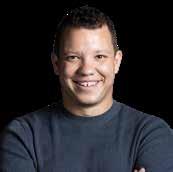
Ryan Bancroft grew up in Los Angeles and first came to international attention in April 2018 when he won both First Prize and Audience Prize at the prestigious Malko Competition for Young Conductors in Copenhagen. Since September 2021, Bancroft has been Principal Conductor of the BBC National Orchestra of Wales. Following his first visit to work with the Tapiola Sinfonietta in Finland Bancroft was invited to become their Artist in Association from the 21/22 season onwards. In 2021, Bancroft was announced as Chief Conductor Designate of the Royal Stockholm Philharmonic Orchestra. He will take up the Chief Conductor position in September 2023.
Bancroft has made debuts with a number of leading European orchestras including the Philharmonia, London Philharmonic, BBC Symphony, Orchestre Nationale du Capitole de Toulouse, Swedish Radio Symphony Orchestra, among others.
He has worked with the Toronto Symphony, Baltimore Symphony and Houston Symphony and has debuts in the 22/23 season with the Dallas Symphony and Minnesota Symphony, as well as at Suntory Hall with the New Japan Philharmonic and Midori, at the Royal Festival Hall with the Philharmonia and Sir Stephen Hough, and at the Concertgebouw with the Netherlands Philharmonic. Bancroft will also return to the City of Birmingham Symphony, Malmö Symphony, and Gothenburg Symphony Orchestras.
Bancroft studied trumpet at the California Institute of the Arts, alongside additional studies in harp, flute, cello, and Ghanaian music and dance. He then went on to receive an MMus in orchestral conducting from the Royal Conservatoire of Scotland. He continued his conducting studies in the Netherlands and is a graduate of the prestigious Nationale Master Orkestdirectie run jointly by the Conservatorium van Amsterdam and the Royal Conservatoire of The Hague. As a student, his main mentors were Edward Carroll, Kenneth Montgomery, Ed Spanjaard and Jac van Steen.
aso.org | @AtlantaSymphony | facebook.com/AtlantaSymphony
B. EALOVEGA 42 | meettheartists
CONRAD TAO, PIANO
Conrad Tao has performed as soloist with the Los Angeles Philharmonic, Chicago Symphony, Cleveland Orchestra, New York Philharmonic, and Boston Symphony. As a composer, his work has been performed by orchestras throughout the world; his first large scale orchestral work, Everything Must Go, received its world premiere with the New York Philharmonic. He is the recipient of the prestigious Avery Fisher Career Grant and was named a Gilmore Young Artist—an honor awarded every two years highlighting the most promising American pianists of the new generation.
This season, Tao performs Mozart with the New York Philharmonic. He returns to the San Francisco Symphony as a soloist in Gershwin’s Concerto in F major at Davies Symphony Hall, and as curator for their Soundbox series. In Washington, DC, he debuts with the National Symphony Orchestra performing Shostakovich with Dalia Staveska, and, following Atlanta Symphony’s premiere of his Violin Concerto with Stefan Jackiw in 2021, he will appear as soloist performing Ravel with Ryan Bancroft. Tao will re-unite with Hannu Lintu to perform Tchaikovsky with the Naples Philharmonic, and return to Finland to open the season with the Tampere Philharmonic and Santtu-Matias Rouvali.
Tao was born in Urbana, Illinois in 1994. He has studied piano with Emilio del Rosario in Chicago and Yoheved Kaplinsky in New York, and composition with Christopher Theofanidis.
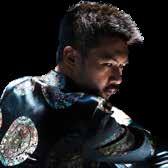 KEVIN CONDON
KEVIN CONDON
encoreatlanta.com | 43
ASO | SUPPORT
The Atlanta Symphony Orchestra continues to prosper thanks to the support of our generous patrons. The list below recognizes the donors who have made contributions since June 1, 2021. Their extraordinary generosity provides the foundation for this world-class institution.
$1,000,000+
$100,000+
1180 Peachtree
The Antinori Foundation
The Molly Blank Fund of The Arthur M. Blank Family Foundation∞
The Coca-Cola Company Sheila L. & Jonathan J. Davies
A Friend of the Symphony∞
Delta Air Lines
Lettie Pate Evans Foundation
Barney M. Franklin & Hugh W. Burke Charitable Fund Georgia Power Company The Home Depot Foundation Invesco QQQ
Abraham J. & Phyllis Katz Foundation∞
Charles Loridans Foundation, Inc. Amy W. Norman Charitable Foundation
Ann Marie & John B. White, Jr.°∞ The Zeist Foundation, Inc.
Alston & Bird LLP
$50,000+
$75,000+ Accenture LLP
The John & Rosemary Brown Family Foundation
Thalia & Michael C. Carlos Advised Fund
Thalia & Michael C. Carlos Foundation
$35,000+
BlackRock, Inc.
Sally & Larry Davis
The Roy & Janet Dorsey Foundation
EY, Partners & Employees
$25,000+
Aadu & Kristi Allpere°
Jennifer Barlament & Kenneth Potsic
Paul & Linnea Bert
Mr. & Mrs. Paul J. Blackney
Janine Brown & Alex J. Simmons, Jr. Connie & Merrell Calhoun
Chick-fil-A John W. Cooledge
The Jim Cox, Jr. Foundation
Mr. Richard H. Delay & Dr. Francine D. Dykes∞
Arthur M. Blank Family Foundation PNC
City of Atlanta
Mayor’s Office of Cultural Affairs Ms. Lynn Eden Emerald Gate Charitable Trust Ms. Angela L. Evans∞
The Gable Foundation Georgia Council for the Arts
Slumgullion Charitable Fund
Graphic Packaging International, Inc.
The Graves Foundation Gary Lee, Jr. Morris, Manning & Martin, LLP Truist
David, Helen & Marian Woodward Fund, Atlanta
Fulton County Arts & Culture Google
Donna Lee & Howard Ehni National Endowment for the Arts John R. Paddock, Ph.D. & Karen M. Schwartz, Ph.D.
Betty Sands Fuller*
John D. Fuller∞
Dick & Anne Game° Sally & Walter George Jeannette Guarner, MD & Carlos del Rio, MD
The Halle Foundation
Bonnie & Jay Harris League of American Orchestras The Marcus Foundation, Inc.∞ Massey Charitable Trust
John & Linda Matthews∞ Moore Colson, CPAs & Bert & Carmen Mills
Sally & Pete Parsonson∞ Patty & Doug Reid Mary & Jim Rubright Patrick & Susie Viguerie Mr.* & Mrs. Edus H. Warren, Jr.
Anne Morgan & Jim Kelley Northside Hospital Novelis
Victoria & Howard Palefsky
Mr. Tyler Perry
Publix Super Markets Charities, Inc. Bill & Rachel Schultz° June & John Scott∞ Ross & Sally Singletary Mr. G. Kimbrough Taylor & Ms. Triska Drake WarnerMedia
Kathy Waller & Kenneth Goggins Mrs. Sue S. Williams
44 | encore aso.org | @AtlantaSymphony | facebook.com/AtlantaSymphony
$17,500+
A Friend of the Symphony
Mr. Keith Adams & Ms. Kerry Heyward°
John & Juliet Allan
Mr. & Mrs. Andrew Bailey Benjamin Q. Brunt Wright & Alison Caughman Choate Bridges Foundation Russell Currey & Amy Durrell
Mr. & Mrs. Erroll B. Davis, Jr.∞ Cari K. Dawson & John M. Sparrow Maria & Rodrigo Garcia-Escudero
Mr. Max M. Gilstrap∞ Mr. & Mrs. Charles B. Harrison
The Estate of John H. Head
The Hertz Family Foundation, Inc. Azira G. Hill
James H. Landon
The Ray M. & Mary Elizabeth Lee Foundation, Inc.
Mr. Kevin Lyman & Dr. Jennifer Lyman Ms. Deborah A. Marlowe & Dr. Clint Lawrence
Terence L. & Jeanne Perrine Neal° Lynn & Galen Oelkers Ms. Margaret Painter∞ Martha M. Pentecost
The Hellen Ingram Plummer Charitable Foundation, Inc. Ms. Cathleen Quigley Regions
Joyce & Henry Schwob
Mr. Fahim Siddiqui & Ms. Shazia Fahim
Dr. Steven & Lynne Steindel° Ms. Brett A. Tarver
The Mark & Evelyn Trammell Foundation John & Ray Uttenhove
$15,000+
Phyllis Abramson, Ph. D. Madeline* & Howell E. Adams, Jr. Mr. David Boatwright
Ms. Elizabeth W. Camp Ms. Lisa V. Chang
Mr. & Mrs. Benjamin Clare°
Lisa DiFrancesco, MD & Darlene Nicosia
Eleanor & Charles Edmondson
Marina Fahim° Fifth Third Bank
Craig Frankel & Jana Eplan Georgia-Pacific Pam & Robert Glustrom Roya & Bahman Irvani
Mr. Sukai Liu & Dr. Ginger J. Chen John F. & Marilyn M. McMullan
Ms. Molly Minnear New Music, USA
North Highland Company
Mr. Edward Potter & Ms. Regina Olchowski° Charlie & Donna Sharbaugh Beverly & Milton Shlapak Mr. John A. Sibley, III Elliott & Elaine Tapp Adair & Dick White Drs. Kevin & Kalinda Woods
$10,000+
A Friend of the Symphony (2) Paul & Melody Aldo∞ Mr. & Mrs. Calvin R. Allen Paul & Marian Anderson* Farideh & Al Azadi Foundation∞ Julie & Jim Balloun
Keith Barnett
Bell Family Foundation for Hope Inc Mr. & Mrs. Gerald R. Benjamin Kelley O. & Neil H. Berman
Bloomberg Philanthropies
The Boston Consulting Group The Breman Foundation, Inc. Lisa & Russ Butner∞
CBRE Colliers International Peter & Vivian de Kok Donald & Barbara Defoe° Marcia & John Donnell Ms. Diane Durgin Eversheds Sutherland Dr. & Mrs. Leroy Fass
The Robert Hall Gunn, Jr., Fund Deedee & Marc Hamburger°
Clay & Jane Jackson JBS Foundation
Ann A. & Ben F. Johnson III
James Kieffer
Stephen & Carolyn Knight
The Sartain Lanier Family Foundation
Pat & Nolan Leake
Meghan & Clarke Magruder Mr. Nicholas Marrone Belinda & Gino Massafra
Merrill Lynch
The Monasse Family Foundation∞
Moore, Colson & Company, P.C.
Mr. & Mrs. James F. Nellis , Jr. Ms. Gail O'Neill & Mr. Paul Viera
Kathryn Petralia & Diane Bartlett
Leonard Reed°
David F. & Maxine A.* Rock
Thomas & Lynne Saylor
Peter James Stelling*
John & Yee-Wan Stevens
George & Amy Taylor
Judith & Mark K. Taylor
Dr. & Mrs. James O. Wells, Jr.
°We are grateful to these donors for taking the extra time to acquire matching gifts from their employers. *Deceased
For information about giving to the
please
Leadership Council We salute these extraordinary donors who have signed pledge commitments to continue their support for three years or more.
Atlanta Symphony Orchestra Annual Fund,
contact William Keene at 404.733.4839 or william.keene@ atlantasymphony. org. ∞
ASO | SUPPORT (cont.)
$7,500+
Jack & Helga Beam∞
Karen & Rod Bunn
Patricia & William Buss∞ Mark Coan & Family Sally W. Hawkins
Grace Ihrig*
Ann & Brian Kimsey
Jason & Michelle Kroh Dr. Fulton D. Lewis III & S. Neal Rhoney
Mr. Robert M. Lewis, Jr. Mr. & Mrs. Arthur Mills IV Mr. Bert Mobley
Hala & Steve Moddelmog Caroline & Phil Moïse
Judge Jane Morrison∞
Gretchen Nagy & Allan Sandlin
Margaret H. Petersen
Ms. Felicia Rives
Hamilton & Mason Smith
Mr. & Mrs. Edward W. Stroetz, Jr.
Stephen & Sonia Swartz Drs. Jonne & Paul Walter Kiki Wilson
Mr. David J. Worley & Ms. Bernadette Drankoski
$5,000+
A Friend of the Symphony
Dr. Marshall & Stephanie Abes
Mrs. Kay Adams* & Mr. Ralph Paulk
Judy & Dick Allison Dr. Evelyn R. Babey
Lisa & Joe Bankoff
Juanita & Gregory Baranco
Asad Bashey
Mr. Herschel V. Beazley Meredith Bell
Bennett Thrasher LLP
Natalie & Matthew Bernstein
Rita & Herschel Bloom
Jane & Gregory Blount
Dr. & Mrs. Jerome B. Blumenthal
Mrs. Sidney W. Boozer Carol Brantley & David Webster Mrs. Cristina Briboneria Margo Brinton & Eldon Park
Jacqueline A. & Joseph E. Brown, Jr. Judith D. Bullock
CBH International, Inc John Champion & Penelope Malone
Ms. Tena Clark & Ms. Michelle LeClair Dr. & Mrs. Richard W. Compans
Carol Comstock & Jim Davis
Ralph & Rita Connell William & Patricia Cook Janet & John Costello Mr. & Mrs. Paul H. Dimmick Dorsey Alston Realtors
Xavier Duralde & Mary Barrett
Mr. & Mrs. John Dyer Paulette Eastman & Becky Pryor Anderson∞ Diana Einterz
Dieter Elsner & Othene Munson
Robert S. Elster Foundation
Ellen & Howard Feinsand Bruce W. & Avery C. Flower
David L. Forbes Mary* & Charles Ginden Mr. & Mrs. Richard Goodsell∞
Melanie & Tucker Green William Randolph Hearst Foundations
Tad & Janin Hutcheson Mr. Justin Im & Dr. Nakyoung Nam Mr. & Mrs. Baxter Jones Paul* & Rosthema Kastin Ms. Carrie L. Kirk
Mr. Charles R. Kowal Mrs. Heidi LaMarca Dr. & Mrs. Scott I. Lampert Peg & Jim Lowman Ms. Eunice Luke Dr. & Mrs. Ellis L. Malone Elvira & Jay Mannelly Mr. & Mrs. Christopher D. Martin
Mr. Robert S. Mathews Mary Ruth McDonald The Fred & Sue McGehee Family Charitable Fund Ed & Linda McGinn° Ms. Erica McVicker Berthe & Shapour Mobasser
Ms. Sue L. Morgan∞
Gary R. Noble, MD Ms. Bethani Oppenheimer Ms. Eliza Quigley Mr. & Mrs. Joel F. Reeves Margaret & Bob Reiser Cammie & John Rice Vicki & Joe Riedel Betsy & Lee Robinson Mrs. Nita Robinson Ms. Frances A. Root Mr. Joseph A. Roseborough John T. Ruff Katherine Scott Suzanne Shull Gerald & Nancy Silverboard
Baker & Debby Smith Ms. Cynthia Smith Dr. K. Douglas Smith Tom & Ani Steele
In memory of Elizabeth B. Stephens by Powell, Preston & Sally∞ Richard M. Stormont & Sally C. Jobe Ms. Kimberly Strong Dr. Nossi Taheri & Ms. Hope Vaziri Dede & Bob Thompson Carolyn C. Thorsen∞ Mr. & Mrs. Peter Toren
Trapp Family
Burton Trimble
Chilton & Morgan* Varner Mr. & Mrs. Benny Varzi Amy & Robert Vassey Ms. Juliana T. Vincenzino Mr. Robert Walt & Mr. Daniel J. Hess Alan & Marcia Watt Ruthie Watts
Dr. Nanette K. Wenger Suzanne B. Wilner Camille W. Yow
$3,500+
Mr. John Blatz
Mr. & Mrs. Dennis M. Chorba Jean & Jerry Cooper
The Aaron Copland Fund for Music, Inc. Phil & Lisa Hartley
Martha Reaves Head Barbara M. Hund
Mr. & Mrs. Ari Levine° Deborah & William Liss° Martha & Reynolds McClatchey
Judy Zaban-Miller & Lester Miller
Donald S. Orr & Marcia K. Knight
Mr. & Mrs. Edmund F. Pearce, Jr.°
In Memory of Dr. Frank S. Pittman III Dr. & Mrs. John P. Pooler Ms. Kathy Powell Mrs. Susan H. Reinach S.A. Robinson
Dr. & Mrs. Rein Saral
Donna Schwartz
Ms. Martha Solano
Angela Spivey
Beth & Edward Sugarman Mrs. Dale L. Thompson
Mr. & Mrs. Robert L. Welch David & Martha West Mr. & Mrs. M. Beattie Wood
| encore 46
aso.org | @AtlantaSymphony | facebook.com/AtlantaSymphony
$2,000+
A Friend of the Symphony (4) 2492 Fund
Dr. & Mrs. Joel M. Adler, D.D.S. Kent & Diane Alexander
Mr. & Mrs. Ivan Allen IV Mr. & Mrs. Walker Anderson
The Hisham & Nawal Araim Family Foundation
Anthony Barbagallo & Kristen Fowks
Drs. Jay & Martin Beard-Coles
Susan & Jack Bertram Catherine Binns & Jim Honkisz*
Shirley Blaine Leon & Joy Borchers
Mr. & Mrs. Andrew J. Bower°
Martha S. Brewer
Harriet Evans Brock Dr. Aubrey Bush & Dr. Carol Bush
Mr. & Mrs. Walter K. Canipe Mrs. Betty Case Julie & Jerry Chautin Mr. James Cobb Coenen-Johnson Foundation
Susan S. Cofer Liz & Charlie Cohn° Malcolm & Ann Cole Mr. & Mrs. R. Barksdale Collins°
Ned Cone & Nadeen Green Mrs. Nancy Cooke Mary Carole Cooney & Henry R. Bauer, Jr. R. Carter & Marjorie A. Crittenden Foundation
Dr. & Mrs. F. Thomas Daly, Jr.
Mr. John C. Dancu Mrs. Anna F. Dancu Mary & Mahlon Delong
Mr. & Mrs. Graham Dorian Gregory & Debra Durden Mr. & Mrs. Robert G. Edge
Erica Endicott & Chris Heisel
Dr. & Mrs. Carl D. Fackler Mr. Ramsey Fahs°
Mr. & Mrs. Paul G. Farnham Ken Felts & A. Richard Bunn
Mr. & Mrs. William A. Flinn Dr. Karen A. Foster
Ms. Elizabeth C. French Gaby Family Foundation
Mr. & Mrs. Sebastien Galtier
Raj & Jyoti Gandhi Family Foundation
Marty & John Gillin°
Sandra & John Glover Mrs. Janet D. Goldstein Mary C. Gramling Richard & Debbie Griffiths
Mr. & Mrs. George Gunderson
Linda & Hank Harris Mr. & Mrs. Steve Hauser Mr. & Mrs. John Hellriegel Ms. Elizabeth Hendrick Mr. Kenneth & Ms. Colleen Hey Sarah & Harvey Hill, Jr.° Laurie House Hopkins & John D. Hopkins James & Bridget Horgan Mrs. Sally Horntvedt Ms. & Mr. Carli Huband Richard & Linda Hubert Dona & Bill Humphreys Mary & Wayne James Nancy & John Janet Ms. Rebecca Jarvis
Mrs. Gail Johnson
Mr. W. F. & Dr. Janice Johnston Cecile M. Jones Mr. & Mrs. David T. Jones Lana M. Jordan William L. & Sally S. Jorden
Teresa M. Joyce, Ph.D Mr. & Ms. Josh Kamin Mr. & Mrs. Todd E. Kessler Mr. Lewis King Wolfgang* & Mariana Laufer
Mr. & Mrs. Theodore J. Lavallee, Sr. Lillian Balentine Law Mr. & Mrs. Chris Le Grace & Josh Lembeck Elizabeth J. Levine
Mr. & Mrs. J. David Lifsey Dr. Marcus Marr Dr. & Mrs. David H. Mason
In Memory of Pam McAllister Mr. & Mrs. James McClatchey
Birgit & David McQueen Dr. & Mrs. John D. Merlino Anna & Hays Mershon Mr. & Mrs. Thomas B. Mimms, Jr. Laura & Craig Mullins Janice & Tom Munsterman∞ Michael & Carol Murphy Melanie & Allan Nelkin Dr. & Mrs. John Nelson
Mr. and Mrs. Solon P. Patterson
The Piedmont National Family Foundation
John H. Rains
Sharon & David Schachter° Mrs. Dianna A. Scherer
Drs. Bess Schoen & Andrew Muir
Drs. Lawrence & Rachel Schonberger
Nick & Annie Shreiber Helga Hazelrig Siegel Diana Silverman
Jeanne & Jim Simpson Mr. Matthew Sitler
The Alex & Betty Smith Donor-Advised Endowment Fund
Anne-Marie Sparrow Peggy & Jerry Stapleton Candace Steele
James & Shari Steinberg
Dr. & Mrs. John P. Straetmans
Kay R Summers
Ms. Linda F. Terry
Ms. Lara C. Tumeh° Dr. Brenda G. Turner Wayne & Lee Harper Vason
Vogel Family Foundation
Ron & Susan Whitaker
Russell F. Winch & Mark B. Elberfeld
Mrs. Lynne M. Winship Ms. Sonia Witkowski
Zaban Foundation, Inc. Herbert* & Grace Zwerner
Linda Matthews chair
Kristi Allpere
Helga Beam
Bill Buss
Pat Buss
Kristen Fowks
Deedee Hamburger Judy Hellriegel
Nancy Janet
Belinda Massafra
Sally Parsonson June Scott
Milt Shlapak
Sheila Tschinkel
Jonne Walter Marcia Watt
encoreatlanta.com | 47
°We are grateful to these donors for taking the extra time to acquire matching gifts from their employers. *Deceased
Patron Leadership (PAL) Committee We give special thanks to this dedicated group of Atlanta Symphony Orchestra donor-volunteers for their commitment to each year’s annual support initiatives:
HENRY SOPKIN CIRCLE
Named for the Atlanta Symphony Orchestra’s founding Music Director, the HENRY SOPKIN CIRCLE celebrates cherished individuals and families who have made a planned gift to the Atlanta Symphony Orchestra. These special donors preserve the Orchestra’s foundation and ensure success for future generations.
A Friend of the Symphony (22)
Madeline* & Howell E. Adams, Jr.
Mr.* & Mrs.* John E. Aderhold
Mr. & Mrs. Paul Aldo
Mr. & Mrs. Ronald R. Antinori
Dr. & Mrs. William Bauer
Helga Beam
Mr. Charles D. Belcher * Neil H. Berman Susan & Jack Bertram
Mr.* & Mrs.* Karl A. Bevins
The Estate of Donald S. & Joyce Bickers
Ms. Page Bishop*
Mr.* & Mrs. Sol Blaine John Blatz
Rita & Herschel Bloom
The Estate of Mrs. Gilbert H. Boggs, Jr. W. Moses Bond
Mr.* & Mrs. Robert C. Boozer
Elinor A. Breman* James C. Buggs*
Mr. & Mrs.* Richard H. Burgin
Hugh W. Burke*
Mr. & Mrs. William Buss
Wilber W. Caldwell
Mr. & Mrs. C. Merrell Calhoun
Cynthia & Donald Carson Mrs. Jane Celler*
Lenore Cicchese*
Margie & Pierce Cline
Dr. & Mrs. Grady S. Clinkscales, Jr.
Robert Boston Colgin Mrs. Mary Frances Evans Comstock*
Miriam* & John A.* Conant Dr. John W. Cooledge
Mr. & Mrs. William R. Cummickel Bob* & Verdery* Cunningham
Mr. Richard H. Delay & Dr. Francine D. Dykes
John R. Donnell Dixon W. Driggs*
Pamela Johnson Drummond Mrs. Kathryn E. Duggleby
Catherine Warren Dukehart*
Ms. Diane Durgin
Arnold & Sylvia Eaves
Mr. & Mrs. Robert G. Edge Geoffrey G. Eichholz*
Elizabeth Etoll
Mr. Doyle Faler Brien P. Faucett
Dr. Emile T. Fisher*
Moniqua N Fladger
Mr. & Mrs. Bruce W. Flower
A. D. Frazier, Jr.
Nola Frink*
Betty & Drew* Fuller Sally & Carl Gable
William & Carolyn Gaik
Dr. John W. Gamwell*
Mr.* & Mrs.* L.L. Gellerstedt, Jr. Ruth Gershon & Sandy Cohn Micheline & Bob Gerson Max Gilstrap
Mr. & Mrs. John T. Glover Mrs. David Goldwasser Robert Hall Gunn, Jr. Fund Billie & Sig Guthman
Betty G.* & Joseph* F. Haas James & Virginia Hale
Ms. Alice Ann Hamilton Dr. Charles H. Hamilton* Sally & Paul* Hawkins John* & Martha Head Ms. Jeannie Hearn*
Barbara & John Henigbaum
Jill* & Jennings* Hertz Mr. Albert L. Hibbard Richard E. Hodges
Mr.* & Mrs. Charles K. Holmes, Jr.
Mr.* & Mrs.* Fred A. Hoyt, Jr. Jim* & Barbara Hund Clayton F. Jackson Mary B. James Mr. Calvert Johnson & Mr. Kenneth Dutter deForest F. Jurkiewicz* Herb* & Hazel Karp Anne Morgan & Jim Kelley Bob Kinsey
James W.* & Mary Ellen* Kitchell
Paul Kniepkamp, Jr. Vivian & Peter de Kok
Miss Florence Kopleff* Mr. Robert Lamy James H. Landon Ouida Hayes Lanier Lucy Russell Lee* & Gary Lee, Jr. Ione & John Lee Mr. Larry M. LeMaster Mr.* & Mrs.* William C. Lester Liz & Jay* Levine
Robert M. Lewis, Jr. Carroll & Ruth Liller Ms. Joanne Lincoln* Jane Little*
Mrs. J. Erskine Love, Jr.* Nell Galt & Will D. Magruder K Maier
John W. Markham* Mrs. Ann B. Martin Linda & John Matthews Mr. Michael A. McDowell, Jr. Dr. Michael S. McGarry Richard & Shirley McGinnis John & Clodagh Miller Ms. Vera Milner
Mrs. Gene Morse* Ms. Janice Murphy*
Mr. & Mrs. Bertil D. Nordin Mrs. Amy W. Norman* Galen Oelkers
Roger B. Orloff

Barbara D. Orloff
Dr. Bernard* & Sandra Palay Sally & Pete Parsonson James L. Paulk
Ralph & Kay* Paulk
Dan R. Payne
Bill Perkins
Mrs. Lela May Perry*
Mr.* & Mrs. Rezin E. Pidgeon, Jr. Janet M. Pierce*
Reverend Neal P. Ponder, Jr. William L.* & Lucia Fairlie*
Pulgram
Ms. Judy L. Reed*
Carl J. Reith*
Mr. Philip A. Rhodes
Vicki J. & Joe A. Riedel
Helen & John Rieser
Dr. Shirley E. Rivers*
David F. & Maxine A.* Rock
Glen Rogerson*
Tiffany & Richard Rosetti
Mr.* & Mrs.* Martin H. Sauser
Bob & Mary Martha Scarr
Mr. Paul S. Scharff & Ms. Polly G. Fraser
Dr. Barbara S. Schlefman Bill & Rachel Schultz Mrs. Joan C. Schweitzer June & John Scott Edward G. Scruggs*
Dr. & Mrs. George P. Sessions
Mr. W. G. Shaefer, Jr. Charles H. Siegel*
Mr. & Mrs. H. Hamilton Smith Mrs. Lessie B. Smithgall*
Ms. Margo Sommers
Elliott Sopkin
Elizabeth Morgan Spiegel
Mr. Daniel D. Stanley Gail & Loren Starr
Peter James Stelling* Ms. Barbara Stewart Beth & Edward Sugarman
C. Mack* & Mary Rose* Taylor
Isabel Thomson*
Jennings Thompson IV
Margaret* & Randolph* Thrower Kenneth & Kathleen Tice
Mr. H. Burton Trimble, Jr. Mr. Steven R. Tunnell
Mr. & Mrs. John B. Uttenhove Mary E. Van Valkenburgh
Mrs. Anise C. Wallace
Mr. Robert Wardle, Jr.
Mr. & Mrs. John B. White, Jr. Adair & Dick White
Mr. Hubert H. Whitlow, Jr.* Sue & Neil* Williams
Mrs. Frank L. Wilson, Jr. Mrs. Elin M. Winn
Ms. Joni Winston
George & Camille Wright
Mr.* & Mrs.* Charles R. Yates
aso.org | @AtlantaSymphony | facebook.com/AtlantaSymphony | encore 48
*Deceased
EXECUTIVE
Jennifer Barlament executive director
Alvinetta Cooksey executive & finance assistant Emily Fritz-Endres executive management fellow
ARTISTIC
Gaetan Le Divelec vice president, artistic planning
Jeffrey Baxter choral administrator
RaSheed Lemon aso artist liaison
EDUCATION & COMMUNITY ENGAGEMENT
Sarah Grant director of education Ryan Walks talent development program manager
Elena Gagon coordinator of education & community engagement
OPERATIONS
Tyler Benware director of orchestra operations & asyo Elizabeth Graiser manager of operations & asyo
Victoria Moore director of orchestra personnel
Paul Barrett senior production stage manager
Richard Carvlin stage manager
Hannah Davis, assistant librarian
MARKETING & COMMUNICATIONS
Ashley Mirakian vice president, marketing & communications
Delle Beganie content & production manager
Leah Branstetter director of digital content Adam Fenton director of multimedia technology Will Strawn associate director of marketing, live
Caitlin Buckers marketing manager, live Lisa Eng multimedia creative manager, live Mia Jones-Walker marketing manager
Rob Phipps director of creative services Bob Scarr archivist & research coordinator
Madisyn Willis marketing manager
SALES & REVENUE MANAGEMENT
Russell Wheeler vice president, sales & revenue management
Nancy James front of house supervisor Erin Jones director of sales
Jesse Pace senior manager of ticketing & patron experience Dennis Quinlan data analyst
Robin Smith patron services & season ticket associate
Jake Van Valkenburg sales coordinator Milo McGehee guest services coordinator
Anna Caldwell guest services associate
DEVELOPMENT
Grace Sipusic vice president of development
Cheri Snyder senior director of development
William Keene director of annual giving
ATLANTA
SYMPHONY HALL LIVE
Nicole Panunti vice president, atlanta symphony hall live
Christine Lawrence associate director of guest services Michael Tamucci associate director of performance management, atlanta symphony hall live
Dan Nesspor ticketing manager, atlanta symphony hall live
FINANCE & ADMINISTRATION
Susan Ambo chief financial officer & vice president, business operations
Kimberly Hielsberg vice president of finance
Brandi Hoyos director of diversity, equity & inclusion April Satterfield controller
Brandi Reed staff accountant
James Paulk senior annual giving officer
Renee Contreras associate director, development communications
Julia Filson director of corporate relations
Dana Parness manager of individual giving and prospect research
Catherine MacGregor manager of donor engagement
Robert Cushing development associate, major gifts
Sarah Wilson development operations associate
Sharveace Cameron senior development associate
ASO | STAFF encoreatlanta.com | 49











aso.org | @AtlantaSymphony | facebook.com/AtlantaSymphony | encore 50
|
ASO
CORPORATE & GOVERNMENT SUPPORT
This program is supported in part by an award from the National Endowment for the Arts.
Major funding is provided by the Fulton County Board of Commissioners.
Major support is provided by the Mayor’s Office of Cultural Affairs.
THE WOODRUFF CIRCLE
Woodruff Circle members have contributed more than $250,000 annually to support the arts and education work of the Alliance Theatre, Atlanta Symphony Orchestra, and High Museum of Art. We are deeply grateful to these partners who lead our efforts to help create opportunities for enhanced access to the work.
$1MILLION+
A Friend of the Atlanta Symphony Orchestra
$500,000+
The Antinori Foundation Bank of America
A Friend of the Atlanta Symphony Orchestra


$250,000+
Accenture
AT&T Foundation
Farideh & Al Azadi Foundation
The Molly Blank Fund
Helen Gurley Brown Foundation
Chick-fil-A Foundation | Rhonda & Dan Cathy
The Goizueta Foundation


Invesco QQQ
Novelis
PNC
Mr. & Mrs. Shouky Shaheen
The Home Depot Foundation
Sarah and Jim Kennedy
The Rich Foundation, Inc.

Alfred A. Thornton Venable Trust
Truist Trusteed Foundations: Florence C. and Harry L. English Memorial Fund Thomas Guy Woolford Charitable Trust
UPS
WestRock
The Zeist Foundation, Inc.

THE LEADERSHIP CIRCLE
Leadership Circle corporations have committed to a contribution of $1,000,000 over one or more years to support the arts and education work of the Alliance Theatre, Atlanta Symphony Orchestra, and High Museum of Art.
Accenture
The Coca-Cola Company

Chick-fil-A
Delta Air Lines Georgia Power
Graphic Packaging Novelis
UPS
WestRock
THE BENEFACTOR CIRCLE
Benefactor Circle members have contributed more than $100,000 annually to support the arts and education work of the Alliance Theatre, Atlanta Symphony Orchestra, and High Museum of Art. We are deeply grateful to these partners who lead our efforts to help create opportunities for enhanced access to the work.
1180 Peachtree
ACT Foundation, Inc.
Alston & Bird
Atlantic Station
John Auerbach
Sandra & Dan Baldwin
BlackRock
The Arthur M. Blank Family Foundation
City of Atlanta Mayor’s Office of Cultural Affairs
The Community Foundation for Greater Atlanta
Melinda & Brian Corbett
Sheila L. & Jonathan J. Davies
Barney M. Franklin & Hugh W. Burke Charitable Fund
Georgia-Pacific Google
Graphic Packaging
Mr. and Mrs. James S. Grien
Louise S. Sams and Jerome Grilhot
The John H. & Wilhelmina D. Harland Charitable Foundation
The Hertz Family Foundation, Inc.
Mr. & Mrs. Hilton H. Howell, Jr.
The Imlay Foundation Institute of Museum & Library Services
Jones Day Foundation & Employees
Kaiser Permanente
Abraham J. and Phyllis Katz Foundation
King & Spalding, Partners & Employees
The Sartain Lanier Family Foundation
Charles Loridans Foundation, Inc.
The Henry Luce Foundation, Inc.
The Marcus Foundation, Inc.
John W. Markham III*
Andrew W. Mellon Foundation
Morris Manning & Martin LLP
National Endowment for the Arts
Newell Brands
Norfolk Southern Foundation
Amy W. Norman Charitable Foundation
Northside Hospital
Victoria & Howard Palefsky
Patty and Doug Reid
The Shubert Foundation
Carol & Ramon Tomé Family Fund
Dr. Joan H. Weens
Kelly and Rod Westmoreland
Ann Marie and John B. White, Jr. wish Foundation
The David, Helen & Marian Woodward Fund
aso.org | @AtlantaSymphony | facebook.com/AtlantaSymphony
$100,000+
*notates deceased













































 ADOBE STOCK
ADOBE STOCK











 KEVIN CONDON
KEVIN CONDON







